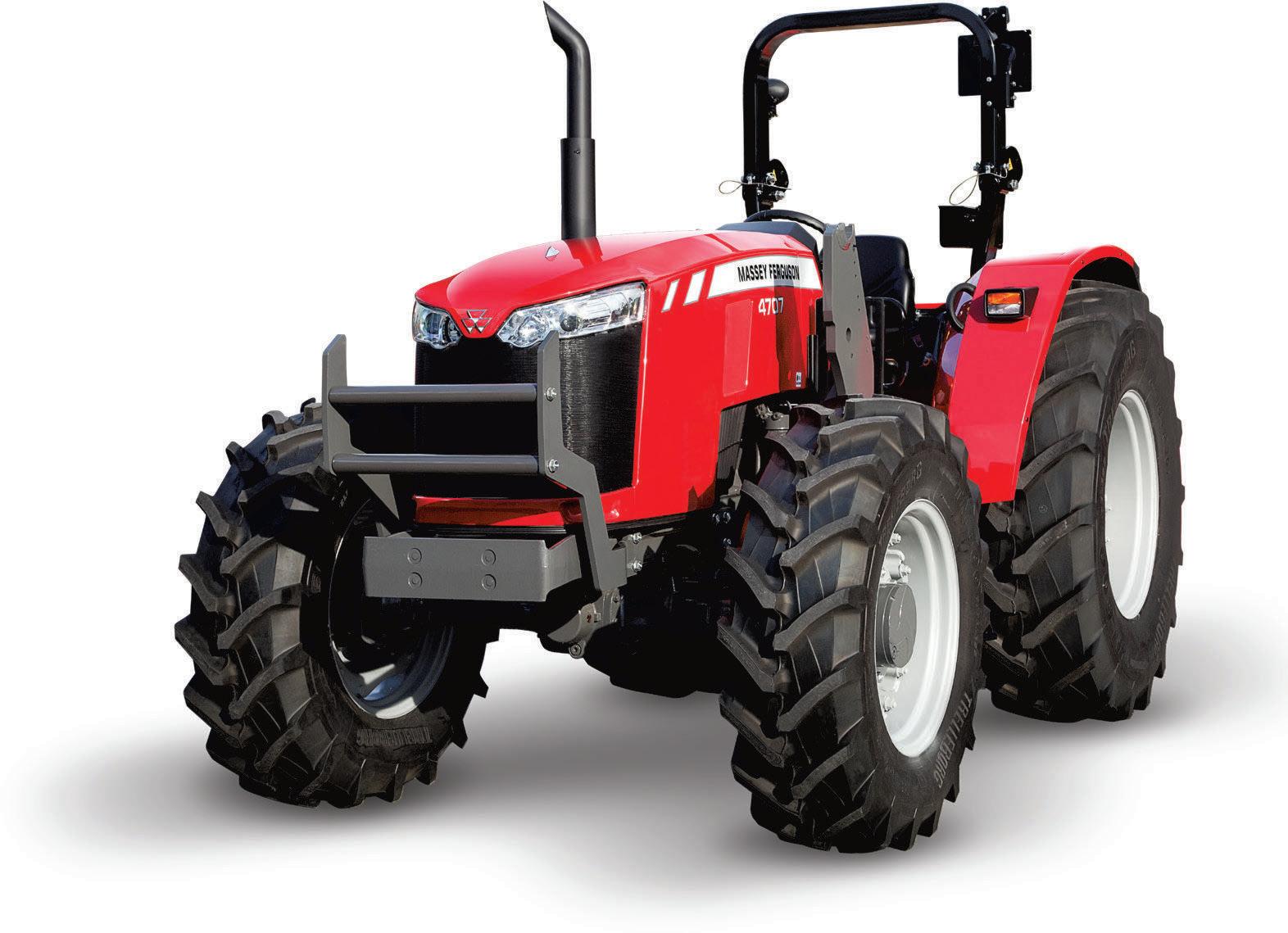




Brett Ciantar (pictured left) at Webster's Butchery inYinnar loves his 'snags' - and so do his customers. He makes up to 35 varieties of sausages for Gippsland locals.
VICGRID has released its study area for the new transmission infrastructurethrough South Gippsland that will transport energy from offshorewind into the Latrobe Valley electricity grid.
The studyareastartsaboutsix kilometresfromthe coastnearGiffard and travels north-west past Stradbroke West, to Willung, across to Flynns Creek and on to the Loy Yang power station.
It does not include the preferred transmission route identified by the private operator AusNet services, which runs the electricity transmission and distribution networks.






AusNet has undertaken three years’negotiations, studiesand environmental and cultural heritage assessments.
VicGrid's chief executive, Alistair Parker, said the study area and the associated connection hub area had been informed by feedback from local landowners, communities and regional stakeholders as well as by technical work carried out last year
The public release of the study area follows amail-out to affected landholders a week before. VicGrid said it had made every effort to reach all owners and residents of property within theareabefore apublic announcement.
This transmission infrastructurewill
support the state’s first offshorewind target of 2GWor200 megawatts by 2032.
The proposed transmission technology is adouble circuit 330 kV or 500 kV overhead transmission line, with further detailed analysisrequired todetermine which is the best operating voltage.
Multiplecombinations of technologies wereinvestigated, includingputtingthe transmission line fully underground. But, after careful analysis, it was ruled out as an optiondue to cost, engineeringcomplexity, procurement and timing.
VicGrid’s analysis found an overhead line is estimated to cost between $700 million and $1.5 billion, while undergrounding is
estimated to cost between $2 billion and $4.5 billion. Those additional costs would be paid forbyall Victorianhomesand businesses through higher power bills.
The higher cost of going underground was largely due tothe complex construction process. Mr Parker said while VicGrid had received feedbackthatsomelocal communities would prefer underground lines, it had also receivedfeedback that the impact on bills wasanimportantconsideration for many.
Mr Parkertold the Gippsland Farmer that AusNetwould probably be disappointedby VicGrid’s plan.
Continued -Page2












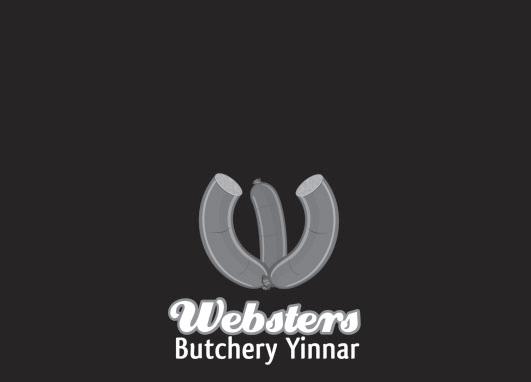









From Page 1
“THAT was something they weredoing at commericalrisk,trying to get enough proponents together as customers to make it work commericially,” Mr Parker said.
Mr Parker said the government’s concern two years ago was that if every proponent developed its own transmission, they would get the community offside because people would be talking to all these proposals that would not necessarily go ahead.
This would create concerninthe wider community, he said, with the government’s Renewable Energy Zoneceasing to be a niche solution.
The first offshorewind farm, Star of the South, hasbeendeveloping its own transmission line separate from the main transmission link.
Mr Parker said the upshot was the government’s decision that VicGrid would be in charge: it would develop the transmission for offshorewind. If the offshorewind industry wanted to be in the runningfor government support, it would have to connect through VicGrid.
“That has been clear for awhile. AusNet paused their activties ayear ago,” he said. Mr Parker estimated about 300 landholders were in the study area, but not all of them would enduphosting atransmission line.
“The work we will do over the next year or two is to identify the corridor,then come down to adetailed route that will be suitable for easements. So probably in six to 12 months time, many of those 300 landholders will find they arenot hosting transmission,” he said.
He acknowledged other onshoresolar and wind projects would also want to tap into the VicGrid transmission line.
“One of the things that has been awkward for us, we really want to sharethis information with the community beforewestarted going into detail withproponents who knew what we weredoing when the community didn’t,” he said.
“Wecan’t start to have those conversations; already acouple have indicated they arekeen to talk to us.
“Obviously, these arethe big questions of capacity. We will need to work through that.”
Mr Parker said it was complicated;the actual line proposed for technical reasons can onlytake 2to2.2 GW. Therewas a perception that to reach 9to10GW, five lines wereneeded.
“Wewill need another line from the coast -it’s not done in detail yet, we will do that work next year as well,” he said.
“Wethink thatweneed another line from the coastto the LV,we willneed to join the two lines. Doing that, you get enough redundancy that you can carry 8 to 9 GW With transmission lines, it’snot like awater pipe wherethe only question is how much water to pump -with electricity, you have always got to cover for fault on one of the lines, you arealways trying to work out to ensure, if have a fault, don’t black out
everybody. The firstlineis always bigger than you strictly need, but when you get another,you can sharebetter.”
To help gauge the location of onshore renewableprojects, Mr Parker said the government was working on the Victorian Transmission Plan.
“It’s starting from land use, instead of starting from the electricty system. It’s starting from perspective of wherethe best places arefor this infrastructure-not just in terms of solar or wind resource, but in terms of what arethe existing land uses,” he said.
“Does this live well with it, or would it be affecting highlyproductive ag land? We aredoing that work now.That might tell youwhen we ve finishedit, this will be a terrible place for solar,orbrillant place for wind -wehaven’t finished that.
“When we have that perspective, it will say to people, ‘clearly, area Aisgood for a particular project; the area Bisaterrible place’. We willmanage that capacity much more closely across the whole of Victoria.”

The VicGrid announcement came aweek after the state government announced its new policy to fast-track planning approvals for renewable energy projects.
The policy has been strongly attacked by the Victorian Farmers Federation and aleading state planning expert.
The federal government is currently assessing feasibility licence applications from offshorewind proponentsinGippsland and has recentlydeclared asecond offshore windareaoff the Victorian coastinthe SouthernOcean region.
VicGrid will now take time to assess the implicationsofthe Southern Ocean annoucenement and the area that has been identified, whichis80per cent smaller than originally planned due to fears about disturbing whale habitat.
IT’S not often the federal Minister for Agricultureand aVietnamese government delegation find their way to Gippsland.
Minister Murray Watt hosted afarm tour at the Ellinbank Smart Farmlast month for international and Australian delegates from the ASEAN- Australia Special Summit 2024.
The Hon. Le Minh Hoan, Minister of Agricultureand Rural Affairs of Vietnam, headedthe delegation that learned of the innovative agricultural practices taking place in the region.
The EllinbankSmartFarm is aleading dairy innovation facility, fast-tracking innovativetechnology solutions in a research environment -showcasing research to the dairy industry.
"Australia is known internationally for being areliable supplier of high-quality produce, includingfromregions like Gippsland," Minister Watt said.
"We’realsobecomingincreasingly knownfor someofthe cutting-edge research and technology that we’ve been taking forwardinour own farming systems to become moreefficient, more productive and more sustainable, and we’re seeing increasing interest in sharing that knowledge and that learning from other countries as well."
Ellinbank SmartFarmishome to aherd of 450 cows and cutting edge technology.
"They werevery interestedtohear about
some of the research being done right hereonthe Ellinbank SmartFarm in things like how you can reduce methane emissions from cattle, how you can use low carbon varieties ofrice," Minister Watt said.
Minister Watt said thatVietnam was an integral market for Australia's agricultural exports.
Australian agriculture, fisheries, and forestry (AFF) products have astrong and growingpresenceinVietnam. In 2021/22, Australia exported arecord $3.4 billion of AFF productstoVietnam, a39.2 per cent increase from the previous year
The two Ministers discussed the potential of expanding the trade relationship further
"The relationship is founded on some of those coreexports like beef, wheat,


barley, cotton, but there’s been recent progress also in anumber of horticultural products," Minister Watt said.
Minister Watt said of Vietnam, with the boomingmiddleclass lookingfor higher quality, healthier and sustainable food, "regions like Gippsland and Australia in general is incredibly well-positioned to service that growing market".
"The Minister was incredibly impressed with the research and technology that he saw hereinthe dairy industry. We areundertakingsome dairy exports to Vietnam, butIthink we couldexpand that as well," Mr Watt said.
With Gippsland producers supplying about 20 per cent of the Australian dairy market, Minister Watt said there would be opportunities in the futurefor Gippsland dairy to supply 20 per cent of the Vietnamese market.


THE state government’s new policy to fast-track renewable energy projects by accelerating planning approvals has been strongly attacked by Victoria’s peak farming body and one of the state’s leading planning experts.
The Victorian Farmers Federation (VFF) said the policy was aslap in the face after years of shamconsultation withfarming communities, while the RMIT Emeritus Professor of Environment and Planning, Michael Buxton, said it would lead to “terrible decisions”, with wind and solar farms being “placed in the wrong locations”.
Speakingto TheAustralian newspaper, he warned also that the new scheme left communitieswith no avenue to appeal unless they could find alegal loopholeand could affordcostly Supreme Court action.
The VFF President, Emma Germano, said the ‘green-lighting’ of major renewable projects added to apoor-track recordof consulting landholders set to be affected and risked further alienating already frustrated farmers across Gippsland.
“Vast parts of Victoria’s farmlandwill be needed to reach our renewable energy targets. If we can’t get this right now, our ability to produce the food and fibreneeded to feed people will be severely inhibited,” she said.
“For the government to say they are
genuinely listening to the concerns of these communities and then completely ignore them and fast-track the process smacks of arrogance and them beingcompletely tone-deaf.”
Ms Germano said the government had ignored the VFF’spleas to introduce a fair framework and had now “hit the accelerator”.
“It’s farmers and our regional communities that areset to pay the price. Decisions like this one leave us shaking our heads,” she said.
The VFF was not against the transition to arenewable energy future, but criticised the government’s failuretoplan accordingly. As aresult, farmers and regional communities were“the scape-goat in the process”.
“Renewable energy has lost social license and the system is broken. This move is a serious regulatoryand planning failure. Thereremains alack of any regulatory safeguards for landholders who host renewableenergy generation, transmissionor storage,” she said.
Professor Buxtontold The Australian that the state government for years had been progressively removing local government and communities from decisions on planning issues.
“They’ve increasingly adopted an autocratic model of decision-making, centralising decisions with the minister.It’s now become the most radically centralised
and autocratic model of decision-making in the country, so it’s no surprise that they’ve extended it to renewable energy projects,” he said.
“The minister has the final say.”
Professor Buxton said with no third-party rights of appeal, wind andsolar generating facilities wouldbeplaced inthe wrong location
“It’s likely all those broader aspects, the loss of farmland,the impacts on biodiversity and landscapes, won’t be properly considered,” he said.
Those contemplating legal action would need to find alegal loophole to take to the Supreme Court. Government used its power to stop these possibilities.
“It’s also incredibly expensive. To go to the Supreme Court costs alot of money, so it’s out of the reach of most people,” he said.
The newscheme, underwhich renewable projects will be eligible for an accelerated planning pathway under the Development Facilitation Program (DFP), appliesfrom April 1.
All new renewable projects in Victoria will be treated as significant economic development, making them eligible for an accelerated pathway -removing the planning panel process and third-party appeals at VCAT.Stalled projects will also be able to access the accelerated pathway. From the time acomplete application is lodged, decisions can be made within four
months. The government says the voices of communities who want to raise concerns will continue to be protected.
Third party objectionswillstill have a place in the approvals process, but "this change prevents time-consuming and repeated delays that hold these projects back for years", the government says.
Adedicated facilitation team will oversee all renewable energy applications.
Projects will be monitored on an ongoing basis to identify blockers earlier and resolve them faster
The issuecomes as negotiations aredeadlocked for access to South Gippsland farm land to connectproposedBass Strait wind farms to the LatrobeValley electricity grid.
The connections will be either by transmission lines above or below ground.
The stategovernment bodyVicGrid is overseeing the whole process and is expected to make recommendations soon.
Last year,the StrzeleckiCommunity Alliance lost abattle in the Victorian Supreme Court to stop the DelburnWind Farm, which consists of 33 250-metrehigh turbines in the middle of aHVP pine plantation. It is bounded by Coalville, Thorpdale, Darlimurla, Boolarra and Yinnar
The alliance, an incorporated association of morethan 1000 members, raised more than $200,000 for the fight.
SHEEP and cropping farmer Jack Armstrong knows that in agriculture it pays to be proactive with safety, particularly whenitcomes to managingthe risks of fatigue during peak periods.
Duringwhatcan be ahigher-risk time for farming workplaces, Mr Armstrong, who farms at Yalla-Y-Poora, south-east of Ararat,isencouraging farmers and workers to haveimportant conversationsaround health and safety and managing fatigue risks.
WorkSafe data shows March and November arepeak months for workplace fatalities in agriculture, corresponding with the busy sowing and harvest seasons.
Mr Armstrong said hecouldsee the dangerous role fatigue could play in contributing to workplace incidents on farms through his own experiences.
"Thereare some horror stories of people having massive incidents.Afarmer near herewas bailing one night after working massivehours and they crashed the tractor into apower pole," Mr Armstrong said.
"He ended up being okay but the machinery was toast. It's having stories like that in the back of your mind that you need to learnfrom.
"It'sjusta shame that it takes something badtohappen to create some good -you'd prefer to be proactive rather than reactive."
Mr Armstrong isadding hisvoice to WorkSafe's emotive campaign,'It'snever you, until it is', which is making areturn with advertising across regional television, radio, print and digitalmediatooffer practical safety solutions for farmers and to encourage conversations around safety.
Mr Armstrong describes fatigue among farmers as "extremely common", particularly at busy times.
"The work that we do can be different to other jobs -itcan be very manually intensive and the hours can be quite exhaustive and that can really catch up to aperson," he said.
"I thinka lot of farmers can havethe misconception that if they work really hard and work long hours they'll get moredone and be moreefficient when you sort of just end up burning the candle at both ends."
WorkSafe Inspector,Dallas Braam, urged farmers and farmworkerstolistentotheir bodiesand not shrug offthe signs of fatigue.
"Fatigue affectsyour decision making and when your decision making is affected, not only are you affecting yourself potentially,
but thepeople you're workingwith, who areusually family and friends," he said.
"Taking abreak to get hydrated, have some food, or call afriend could prevent an injury out thereand you'll be going home to see your lovedones at the end of the day -that's the difference."
Families and communities arereeling from the loss of two livesinworkplace incidents on farms already this year,taking the number of work-related deaths in agricultureto34since January 2020.
Farmers and farmworkers who suffer serious injuries also face along road to get back on the job, with morethan 25 per cent of those injured still unable to returnto farming one year on from aserious incident.
WorkSafe executive director,Narelle Beer said every conversation about farmsafety helped remove the stigma around health andsafety in agriculture.
"We'reworking for afuturewheresafety is at the centreoffarming operations and wheredeaths and injuries areseen to be preventable, not inevitable," Dr Beer said.
"Every time afarmer or farmworker talks about farmsafety helps to make a real difference in preventing families and communities from losing loved ones."
Moreinformation on the 'It's never you, until it is' campaign and farmsafety can be found at worksafe.vic.gov.au/saferfarms








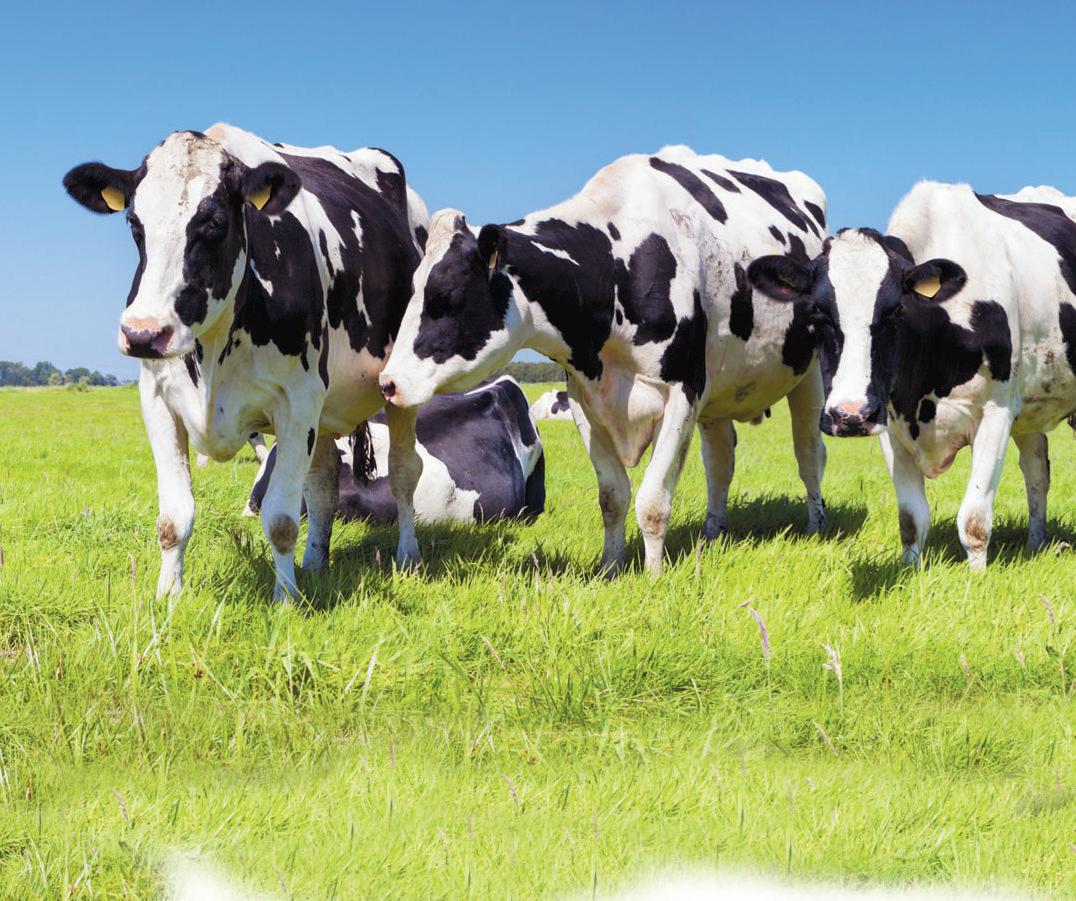
AGRICULTURAL groups have made abig push for recognition of the short-lived natureoflivestock methane emissions in the federal government’s main climaterelated target.
The industry is the first of six sectors the government is making a“decarbonisation plan” for,inabid to reach its goal of net zeroemissionsby 2050 –with written submissions to the plan.
CSIRO research suggesting the cattle industry could no longer be contributingto additional global warming by 2026 and that the sheepmeat sectorwas already “climate neutral” was aconsistent theme throughout the agricultural group’s submissions.
Adopting “climateneutral”asacentral target and moving away from the beef industry’s highly publicised carbon neutral by 2030goalhas beenone of the main policies of the grass-fed cattle industry’s peak lobby group, Cattle Australia, since it took over from Cattle Council in 2022.
The mainpushhas been about recognising the short-lived nature of livestock methane emissions,which aresaid to breakdown over 12-years –anaspect that is not recognised in the current reporting metrics used across the world.
While CN30 is still atarget in the Red Meat2030planand was stillmentioned multiple timesinthe Red Meat Advisory Council (RMAC) and theNational Farmers’ Federation’s submissions, separating methane from fossil fuel-related carbon dioxide was also aprominent point.
In its submission, RMAC pointed to the different metrics tailored towards, including the GWPstar(global warming potential) and radiative forcing footprint, which both take into account the breakingdown of methane.
“Climateneutralistemperature-based, rather thanaGHG emissions targetand is aligned withthe Paris Agreement, which aims to strengthen the global response to the threat of climate change by limiting the rise in global average temperaturetowell below 1.5°C above pre-industrial levels,” the submission says.
“The federal government’s decarbonisation plan should incorporate our industry’s progress towards climate neutrality so that we can shareour successes, includingwhen we cease to have impact on temperature rising and when we begin to go over and aboveachieving no additionalimpact on
warming.”
The NFF also made several mentions to the short-lived natureofmethane and the work of University of Oxfordprofessor Myles Allen and University of California Davis professor Frank Mitloehner
“Unlike fugitive fossil fuel emissions, agricultural emissions arepredominantly biological, area natural process, and broadly cyclical in nature. Recognising thatmethane has asignificantlylower atmospheric lifetime than CO2 which can persist for decades longer,methane emissions from livestock arenot as persistent or damaging as CO2 emitted from fossil fuels,” the submissions said.
“Furthermore, if the totalnumber of livestock in Australiaremains constant, farmers’ contribution to additional global heating through methane emissions from the national herdwill not contribute to additional warming."
Prof. Mitloehner and Prof. Allen, two livestock experts in thefield, agree there is atask for ruminant agriculture, but it must beviewed through an appropriate prism of aneed for innovation,realistic ambition, and moreaccurate reporting.
“Iffarmers reduce emissions beyond this baseline, it will have the equivalent effect of activelyreducingwarmingfromthe atmosphere, and hence mustberewarded. Agriculturewillcontinue to contribute; othersectorswillappropriately achieve reductions much moresharply.”
Speaking to Beef Central, the director of Cattle Australia, Adam Coffey, said climate neutral was inherently a“net zero” achievement –given “net zero” had traditionally applied to big CO2 emitters, like fossil fuel companies, who need “zero” emissions to stop contributing to global warming.
Mr Coffey said separating methane emissions from CO2 would help industry be part of the solution to climatechange, especially given agriculture’s ability to sequester carbon through vegetation and soil.
“Weseeksupplementary reporting and further support to understand the unique natureofour biogenic emissions and indicate our continued ambition to be part of the climate solution by helping heavy-polluting sectors and government as awhole to achieve their net zeroambitions,” he said.
-BeefCentral
AS thefederal government continues to pursue ambitious targets to reduce emissions, one of thecountry'sbiggest agricultural investors has called for the industry to embrace the changes ahead and look for the opportunities alow emissions economy may provide.
Producers fromacross the country gatheredonthe NorthernTablelands of New South Wales last monthfor the annual Wilmot Field Days, which had its biggest crowd ever this year.The field day also had delegatesfromHungary, New Zealand, the United Kingdom and Canada.
The day was opened with an address from Alasdair Macleod, who is the executive chair of MacDoch Group, which owns the Wilmot Cattle Company.
Mr Macleodsaid asuite of federal government commitmentstoreduce agricultural emissionsweregoing to have aprofound impact on the industry.
“Now, we in the industry have achoice,” he said.
“Wecan feel threatened and challenged by these changes that arecoming down the track. Or we can embrace change and look at how we can turnthese changes into opportunities. The government has


committed to including agricultural emissions in its national targets at the annual COP meeting and made agriculturethe firstof six sectors to come up with a“net zero plan.”
Mr Macleod said it was also learning from recent protests in Europe.
“It appears that government understand that regulation or quotas arenot going to work,” he said.
“They’relooking at what’s been happening in Europe and they understand that heavy handed regulations result in their streetsbeingblockaded by angry farmers in their tractors.
“So, let’s work with the government on how we can achieve the best outcomes for farmers, ourclimategoals,and the wider economy.”
The cattle industry has also been forming climate policies, with the peak lobby group for grass-fed producers, CattleAustralia, pushing for greater recognitionof the short-lived natureof livestock-related methane emissions -a push followed by other industry groups in the recent net-zeroplan.
“I know about the argumentabout biogenic livestock emissions not being the equivalent of fossil fuel-based methane

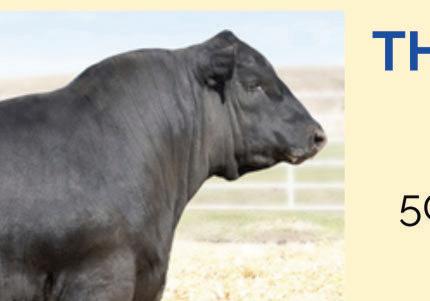

emissions and Iagree that they arevery different, but Iworry it’s going to be along battle to persuade climate policymakers to change tack on this,” Mr Macleod said.
“The good news is that thereisnow a lot of work, money and resources going into solving the livestock emissions question, whether that is in the formoffeed additives, rumen biome interventions, geneticsor some othermechanism for making the process of turning carbohydrateinto protein moreefficient and minimising methane waste.”
One of the mainopportunities Mr Macleod was keen to talk about was the ability of the agricultural industry to generate and sell carbon credits. MacDoch and Wilmot have been innovators in the carbon market, signing adeal to sell soil carbon credits to Microsoft in 2019 and advocating for greater recognition of the agricultural industry’s ability to sequester carbon in its soils.
He said the opportunities weregrowing
“Thereisnoway Australia is going to hit its net zerocommitments just by lowering emissions,” Mr Macleod told the crowd.
“Thereare still many sectors of the economy that haven’tworked out how to lower emissions significantly.
"In the absence of breakthrough

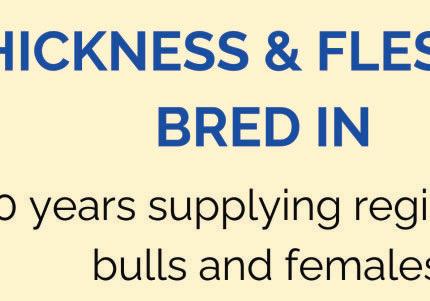

technologies to decarbonise these hard to abate sectors, this is going to drive up demand for Australian Carbon Credit UnitsorACCUs, whichthe Ag sector shouldbeabletoprovide. There is no better technology for lowering emissions than that which natureprovides us.
“But let’sbeclear; it is not the job of farmers to bail out the rest of the economy who will struggle to meet their emissions commitments. But farmers are good at taking market opportunities–and Ibelieve this is an opportunity.”
Mr Macleod said he believedAustralian agriculturecould go “beyond net zero”, meeting carbonneutral specifications and selling carbon credits.
“It’s clear that in due course, therewill be some sort of apremium for Ag commoditiesthat can demonstratecarbon neutrality. It’s also clear that the supply chaindoesn’t want to pay much of a premiumfor carbon neutrality," he said.
"Buthere’s the problem: if Ican sell carbon credits at $30/40 atonne, Iam going to have to receive amuch bigger premium for my beef to forgo that opportunity. So, we have to work out how to do both. And Ibelieve the capacity of most of our farms will allow us to do both, so long as we get the management levers right.”
-BeefCentral






THE federal DepartmentofClimate Change says it plans to progress anew integrated carbonfarming methodology later this year after concerns wereraised about it pausing the process late last month.
In mid-March, the DepartmentofClimate Change, Energy and Water contacted the carbon industry with aproposal to strip back the new Integrated Farmand Land Management (IFLM) methodology -which will allow for multiple projects to run on onepiece of land.
The carbon industry replied with strong opposition to the proposal and worked with the department on ways forward. On March 20, the departmentcontacted the industry to say it was pushing forwardwith the methodology.
New methods under the scheme will make an important contribution to achievement of the government’s emissions reductions targets of a 43 per centreductionon 2005 levels by 2030 and net zero emissions by 2050.
“The government is continuingtowork on ensuring the integrity of the ACCU Scheme. New methods under the scheme will make an important contribution to achievement of the government’s emissions reductions targets of a43per cent reduction on 2005 levels by 2030 and net zeroemissions by 2050,” the email to industry said.
The CarbonMarketInstitute'schief executive,John Connor,said resourcing within the department appeared to be the main issue -with the new methodology beingafundamental changeinthe way carbon projects areadministered.
“Weare very keen to see the federal government’sMay budget and we hope it makessurethe departmenthas the resources it needs to progress this methodology,” Mr Connor said.
Part of the issue is that old methodologies which arecurrently used for carbon projects arestarting to be phased out in preparation for the new methodology. The methodologiesbeing phased out cover the vast majority of Australian Carbon Credit Unit supply.
“The industry has astrong view on this, they need to push through with IFLM as a matter of priority,” Mr Connor said.
“This method covers some of the only waystogenerate ACCUs at alargescale and the longer it takes the moreofan impact it will have on supply in the medium term-developing these projects often takes years.”
Industry has alsobeenadvocating for some interim measures, includingthe extension of the methodology used for tree plantings. What is the process now?
The department is currently workingwith an industrygroup to design the methodology, beforesending it to an independent bodycalledthe EmissionsReduction
Assurance Committeewho needs to sign it off, beforethe minister gives it the final tick.
One of the main issues the department is working through is adebate over the impact of grazingpractice changes on vegetation growth. The department said in its emailthat it was tryingtowork through some of the morecomplicated aspects of what isbeingproposedwith the view of makingsureit standsup to scrutinyof the independent body.
“The Minister cannot make amethod unlessthe ERAC assesses it as meeting the legislated Offsets Integrity Standards. For example, meeting the offsets integrity standardfor ‘clear and convincing’evidence will requirefurtherwork by the department to document, test and compilerelevant evidence as part of developing the proposed IFLM method," the department said.
"This will be informed by further engagementwithstakeholders, including land managementacademics and practitioners,and industry andcarbonmarket participants.
“Dependent on progress made to support the initial scope of the method, the department planstobeina position to take a draft method to the ERAC for advice in the second half of 2024.
“Additionally,the departmentwillalso work to proposeadraft method to ‘remake’ the Reforestation by Environmental and Mallee Plantings method as apriority. Further information on this work will be made available on the department’s website shortly.”
-Beef Central


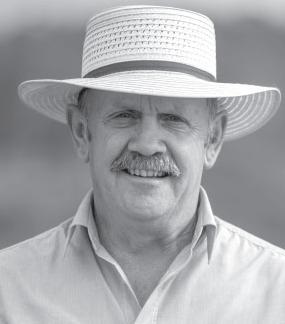




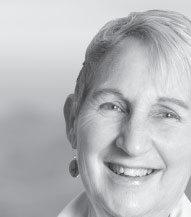





ON a broader Gippsland tour, a renowned independent plant and soil educator Joel Williams,visited Gippslandareas from March 12 to 18,completing workshops on better understanding of our soils.
From theory to practical paddock walks, farmers and other locals from areas such as Bunyip,Flynn, Yarram, Orbost,Bairnsdale, and Omeo left with fewer questions about improving their farming practices.
Beforeeach event, each attendee filled out aformdocumenting their areas of practice so that the sessions weretailored to the group.
AGippsland Ag Group (GAgG) organiser, Hannah Campbell,said “the talks were tailored to the area and touched on the connectionbetweentraceelements and animal health, which is important for areas like this (Flynn), being thatwe arequite livestock-focused".
"Granted, thereare some cropping guys around and mixed farmers, but many of the farmers who attended arebeef farmers, and therewereafew sheep farmers, afew mixed farmers, and afew croppers,” she said.
Therewere35attendees at the Flynn Hall workshop on March 13 who throughout the session questioned Mr Williams during the event, comparing their knowledge and wheretheir knowledge ended.
Mr Williams said, “the farmers at today's event mostlyhavebeen beefand sheep raisers".
"So it's been mostly around pastures, how to get better pasturehealth, how to use some multispecies pastures and get multiple benefits that can come from that. So, itcertainlyhas had apasturefocus, including how to leveragethe fertility in theirsoils andhow better to use inputs and fertilisers and optimises them,” he said. “Wehave talkedabit aboutfoliar-applied

nutrients for the last few days. Thereare some exciting opportunities to use very targeted, low-dose, highly efficient inputs directly through the foliage, whichcan help optimise production. So yeah, there have been alot of pasturemultispecies and optimised fertility questions. But we've also had afew other cropping farmers and even afew horticultural farmers and that kind of thing, too.”
According to Mr Williams, soils worldwide arehighly variable, regardless of the type, location, or climate. He said that was part of the challenge with soil, as it behaves differently even within one paddock.
Mr Williams mentioned weatherconditions on the day, talking about therotation cyclethat can help provide yearly stock and how the soil reacts to weather conditions.Healsomentionedthat Australian soil is very old, weathered and drained of nutrients.
“Australia is renowned for having very, very old soils. We haven't hadany kind of geological activityfor many, many millennia, so oursoils arevery old, very weathered, very drained of nutrients, and very leaching of nutrients. We haveavery hot climate, so some of our soil's organic
matter and carbon also cycle alot faster, so it's abit moredepleted,” he said.
“However, aslightly cooler,temperate climate means they can accrue, build up carbon, and hold on to that abit better in those slightly cooler temperatures.”
According to Mr Williams, maintaining soil has many challenges as thereissomuch that they endure. He also said that he had heardfarmers complaining about the soils being too saturated, and then therewas a turn, and suddenly, it was too dry, which is why water infiltration is essential.
Mr Williamssaid“it's really important that we get water down into the soil, and this is why some soil health practices and principles areimportant to optimise some of the soil's physicalproperties that ensure better water".
"Whatwe've seen over thereisthat farmers think that their soils aresaturated," he said.
“Overthe course of the year,soils have to endurevastly different temperature extremes. Moisturedifference can be saturated and wet at one point afew months later,oritcan be completelybone dry. That huge contrast of environments presents challenges in management,particularly
for some organisms and things to survive and thrive there.
"As soils dry out, they become morehostile environments, making it harder for living thingstogrow. Alot of the organisms in the soil microorganisms that will be going to sleep will go dormant when the soil dries out some of those earthworms, and things willbeburrowing much deeperthanI'm trying to get moisturedepth, so alot of the biological activity slows right down. When that happens, it also slowsdown alot of the nutrient cycling because those organisms help to cycle nutrients and make nutrients available for plant uptake.
“We'reverylucky inthe contextof microorganisms that they arealso rather resilient organisms. So they go dormant, and when soilsare rewet or conditions, temperaturescome good again,orwhatever those changes are, they can break their dormancy and come back to life and come back to functioning.”
Ms Campbell told the Gippsland Farmer that this was her first event with GAgG. She was pretty pleased with the turnout and couldn’t havedone it without Gippsland Landcare, SouthernFarming Systems, and Wellington Shire, who funded the events.
Ms Campbell said that Joel’s workshops had been incredible over the week and that he had foundhis investigationintosoil health incredible.
“He has really investigated how to improve soil healthrather than slapping aband-aid on things to fix them. He is really invested in teaching people that thereare different ways of lookingat things and improving soils, as well as how to interpret your soils and carefor them,” she said.
Overall, both werepleased with the workshop's outcome and arelooking forwardto futureones.
For moreinformation on GAgG, go to gippslandag.com.au/

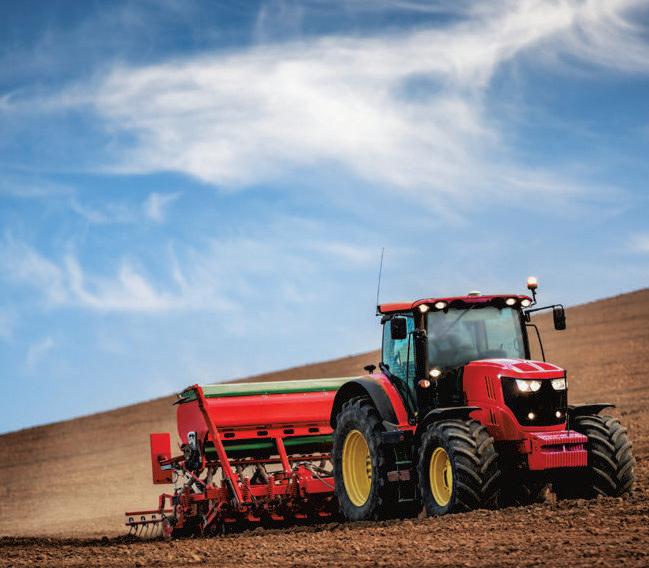


IT has come to the attention of Latrobe Valleycharity, Companion Pet Careand local vets that thereisanoutbreak of Parvo virus in the Latrobe Valley at the moment.
Parvo virus is one of the diseases that annualvaccinationof your dog helps prevent. It is ahighlycontagious, highly transmittable disease that can persist in theenvironment for an extended period. These areas aregenerally public areas such as parks, footpaths and other spaces frequentedbyowners andtheir pets,as well as the living quarters of the animals.
An unvaccinated dog running on apark wherea Parvo positive dog has been is at great risk.
Parvo virus symptoms include vomiting, diarrhoea (often bloody), lethargy,reduced appetite and tummy pain. Symptoms progress quickly and even with treatment it can be fatal.
Ownersare encouragedtocheck their dogs vaccination status and get their dogs vaccinated immediately, if due, to have their beloved pet as protected as possible. Dogs under one year areathigher risk.
“I hopethey (owners ofinfecteddogs) understand how infectious this virus is and how persistent it is in the environment (i.e. years). Any unvaccinated dog visiting their property in years to come will be at risk,” alocal vet said.
"So, they need to be very mindful. They will also need to think about using disinfectantsthat are effective against unenveloped viruses to decontaminate any hardsurfaces athome -some products that couldbe used include accelerated hydrogen peroxide disinfectants, and F10 used at appropriate dilution rates for appropriate contact times.
"This will be alot to take on boardfor them while they're dealing with this but the main thing is for them to understand that theproperty will be arisk for some years.”
If you have adog who appears to possibly have the above symptoms, contact yourvet ASAP for further instructions and to have your pet tested for Parvo. It is imperative that an infected dog does not enter the veterinary surgery, as it will contaminate any area it touches.
GIPPSLAND Water is encouraging customers to be responsible withwater use through its new ‘Reduce your use’ campaign.
“Water conservation is everyone’s responsibility and as the population grows, so doesthe demand for water -every drop counts,” Gippsland Water Managing Director,Sarah Cumming, said.
“Usingwater responsiblyisnot only better for the environment but can also help save money on bills.”
“You can easily save water by using the half flush on thetoilet, planting native and drought resistant plants, avoiding watering yourgarden whenrain isforecast,and



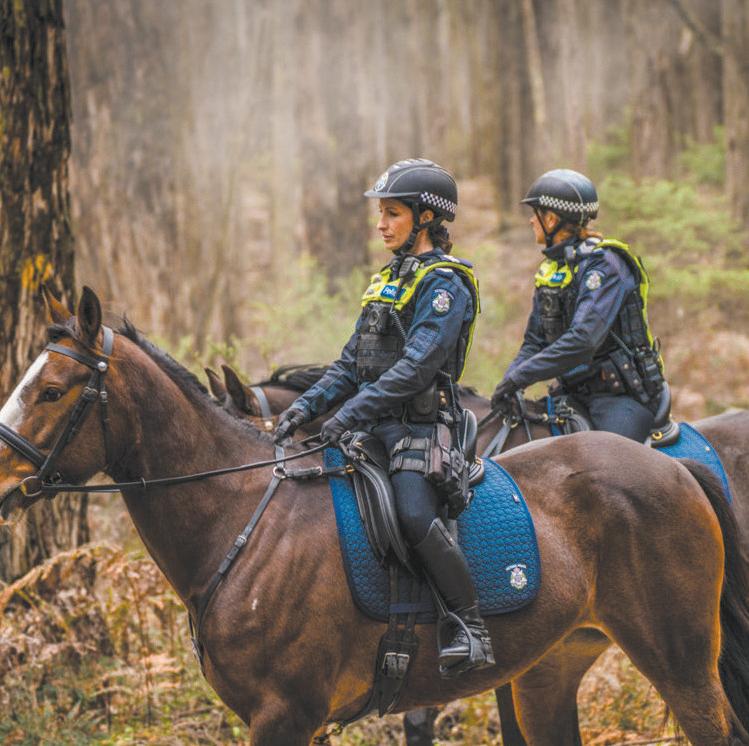
waiting until your dishwasher is fullto run acycle," she said.
“You can also consider buying watersavingappliances, and get leakytaps fixed as soon as possible. We also offer a showerhead exchange and atrigger nozzle program to help our customers save water.”
‘Reduce your use’isone offour new annual community education campaigns to be delivered as part of Gippsland Water’s 2023-28 Price Submission.
To access water saving resources and learnmoreabout permanent water saving rules visit gippswater.com.au/ reduceyouruse







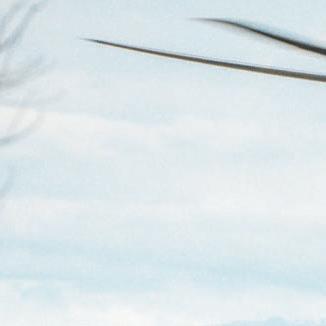









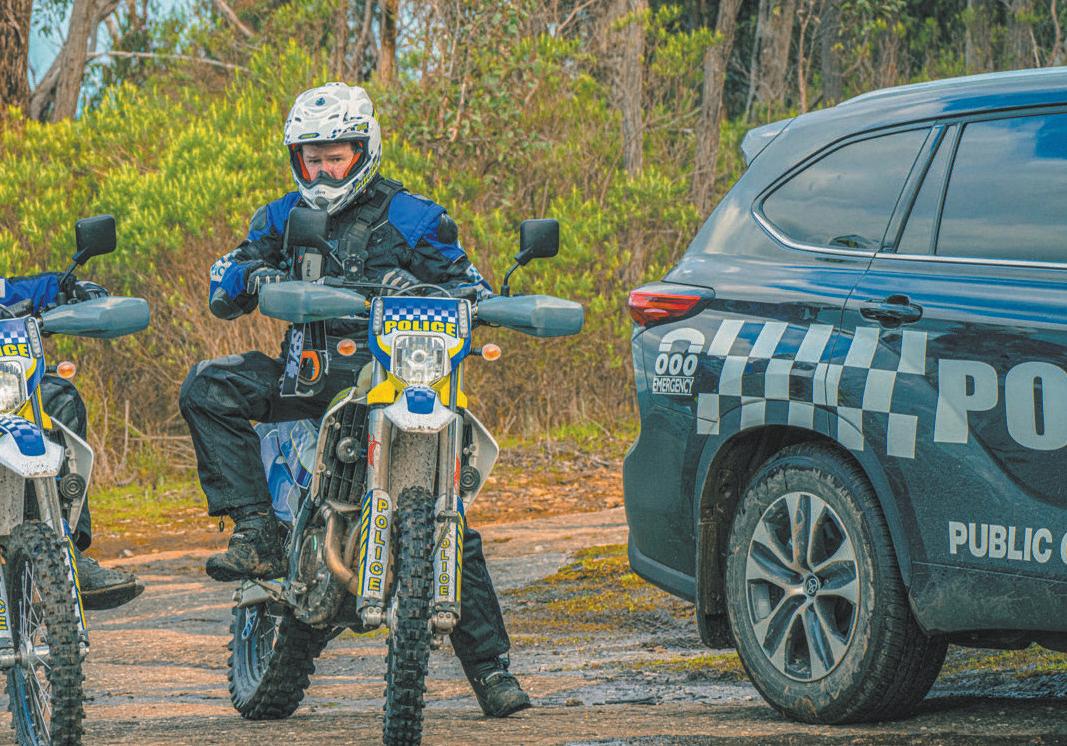


BRETT at Websters Butchery in Yinnar may not be known as 'The Sausage Man’, but he may as well be.
Lovers of the traditional ‘snag’ have access to 30 to 35different species at thewellknown meat outlet.
“Weare well known for our sausages-we have won alot of awards for them, as well as our ‘burgers’. Of the 30-35 different sausage varieties, we mostly make two or three available each week. We rotate it all,” said Brett, who bought the shop about 10 years ago from its founder Colin Webster
“Theplain sausages,traditional beef sausages, sell the best, but beef, lamb and pork make different flavours.”
When Brett bought Websters, he kept the original name.
“My surname is Ciantar-that’s why that’s why Ileft it as Websters; no one would be able to pronounce my surname, which is Maltese,” he said.
There’s also some Scottish and Irish in his background.
“People like things that have been going for along time. Some people like to change the name; Ipersonally prefer not to, especially in small towns,” he said.
Brett has been abutcher for morethan 30 years since starting out aged 16. Originally from the Mornington Peninsula,he’d worked around the traps beforesettling in the Latrobe Valley in 2001, buyinga 10-acrehobby farmatBoolarra wherehe ran sheep.
Thatwas fineuntil 2009whenhe was burnt out by the Black Saturday bushfires He had to “pick up the pieces”and start rebuilding, turning the property into a working farmofpigs and sheep.
“I worked in acouple of different places, but ‘Webby’had beenhasslingmesince
the fires about buying here, so he urged me to come back here andget back into butchering. ‘Webby’ had been herefor 10 years -heowned this place but wanted to get out and thought Iwas the right person to take over,” said Brett.
Over the years, he has developed aspecial relationship with different farms in the district, buying meatdirectly fromthem and selling the produce through the shop.
Radford’s award-winningabattoir in Warragul plays akey role in Websters’ success.
Brettsends local cattle therefor processing and also sources other beef and lamb
from Radford’s. It’s all Gippsland meat.
However, beef is not the only ‘game in town’; “Wesell normal meat cuts as well, amixtureofall -beef, port, lamb, chicken. Beef and lamb arestill the most popular but sales drop offasprices or interest rates areup. It dependsonthe price -what people areprepared to pay.
"Wedefinitely notice thedrop-off,” he said.
Whatever,thereis asteady flow of people through the Yinnar outlet. Yinnar is about 20 minutes from Morwell, but Websters gets alot of customers from Traralgon, Morwell and Moe.
“People come from Grantville,Gormandale

-regulars who stock up,” said Brett.
“It’s alarge area people come from, but we -little butcher shops -are definitely a dying trade and breed. Supermarkets hit you, but we definitely have abetter product. Alot of our prices arethe same -but in some places, our price is much cheaper Supermarkets make their own rules.”
Brett works with Steve Barry, while Lisa O’Reilly also helps out as acasual.
“We’ve bothworked in supermarkets in the past -weknow what we aretalking about. Our point of difference -isservice -and we have 60-plus years’ experience,” he said.
The cash register is kept busy, but it can vary from week to week.
On the day beforeour recent conversation, therewere90Eftpos transactions, plus another 30 to 40 in cash.
With oftenmorethan 100 customers a day, that makes regularly well over 500 customers aweek.
“It’s acrystal ball, aguessing game, how much to buy,” saidBrett, butfresh product constantly comes in during the week. The seasons have an impact.
“It’s pretty consistentthroughout the years, you definitely notice winterand summer -morebarbecues in summer or slow-cook roasts in winter.”
One disadvantage is thatwithoutthe range of abattoirs, it’s along way to processors; pigsgotoLaverton or Orbost, beef and lamb at Radford’s, while chicken is processed at Carrum Downs in south-east Melbourne.
Thereare afew venison farms, but no venison abattoirs.
“I do venison ‘snags’, but it depends on getting the meat,” said Brett.






























DIFFERENT winteringoptions for New Zealand dairy farmers in aworld of tightening environment regulations due to water quality and climate policy, was the subject of discussion at aGippsDairy Muster at Trafalgar last month.
Morethan 200 dairy industry members gatheringon-farm. The theme of the day was 'Pasture,Pathways and Performance', and it showcased the latest trends, technologies, and practices in dairy farming.
Emceed by Trish Hammond,adairy farm owner fromWestGippsland,attendees heardfromindustry expertsand Gippsland farmers on ways to optimise pastures, business succession plans, and overall performance.
Farmhosts Graeme and Louise Paul, Belinda Egan, and Simon Reid shared their dairyingstories and highlightedtheir current farmsystemas share farmers.
Among the attendees was agroup of eight agriculturestudentsfromFoster Secondary College, who networked with local dairy employers and members of the Gippsland Young DairyNetwork, and joinedthe career pathways and progression breakout session. The guest speaker,aSenior Scientist at DairyNZ, Dawn Dalley, said the NZ dairy industry had been working to deliver to national and environmental regulations for many years.
“Thereisnational and regional policy for water quality and in morerecent years,NZ has committed to reduce greenhouse emissions as amember of theParis Agreement. We now have greenhouse gas commitments that we need to work towards,” she said.
“Also,dairy farmers arerequired to operate within the Dairy Cattle Code of Practice. That is being updated at the moment; some of the changes being suggested could have implications on how farmers farm.”
In this context,Dr Dalley, who spent eight years workinginGippsland at the Ellinbank research centreearlier in her career,discussed the key management considerations and some environmental benefits of the different wintering options that NZ farmers had adopted.
These included pastureand supplementbasedwintering options,and winter forage crops that areused quite extensively in the South Island, wherewinter pasture growth
is low due to cold temperatures.
“It’s hardtohave cows on pasturein winter,” she said,hencethe use of kale and swedes, or fodder beet.
Dr Dalley said these threemain feed types created areal advantage; they were of high quality and grew alot of kilograms of dry matter.Fodder beet also offered an opportunitytoreducenitrate leaching and nitrous oxide emissions.
“Farmerscan growthem through the summer and autumn and break-feed as a standing crop with supplements through the wintertime,” she said.
“That means they can minimise the area need for wintering;that area goes back into grass the followingspring. Whilewidely used by farmers, this wintering practice has come under some scrutiny in NZ because the animals graze offthe crop completely. It’s not agrass paddock wherethereisstill material left behind; they pretty much eat allthe crop, so it lookslikethe cows are standing in amuddy paddock. Despite how the paddock looks, the cows do very well on winter crop diets.”
Public perceptions have changedhow farmers winter on crop in recent years. "That is the challenge we have in the age of smart phones. We areinstantly connected to the rest of the world. It's very easy to take aphotograph outofcontext, which can have anegative impact on how farming is perceived,” she said.
Dr Dalley said NZ researchcentred on the environmental and animalwelfare benefitsofforagecropwintering. Other wintering systems werebased on pasture with conserved feed, (silage or baleage) and morerecently, moreregenerative approach, “using hay and pasture".
Another system wasthe ‘off-paddock infrastructure’ -barns and other housing options.
“The disadvantage of these is the capital cost.Thereisaalsobelief thathaving animals improves the animal welfareoutcome, but it takes different skills to manage animals indoors; it does not necessarily lead to better welfareoutcomes,” she said.
Dr Dalley said conditions on NZ’s South Islandand Gippslandwerenot thatdifferent (apart from annoying, pesky flies).
“Both have strong southerly squalls that come through, although Gippsland is less

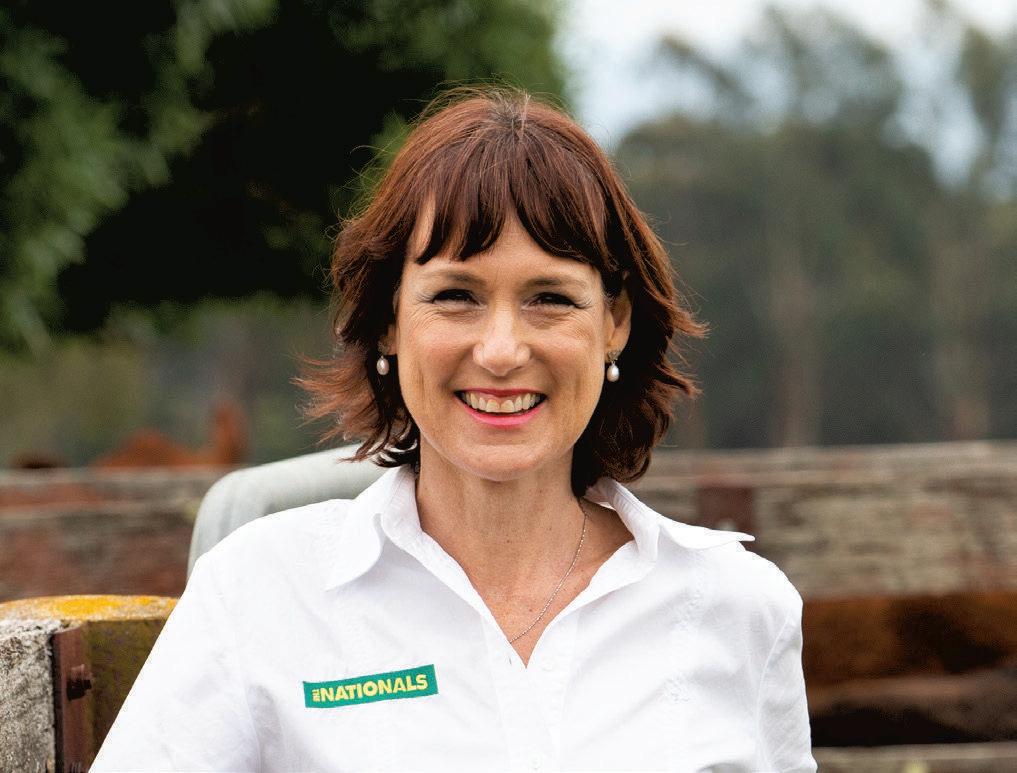

likelytoget snow. Ilivedherefor eight years;there weresoutherlies,frostsand lots of rain, so it was not much different, except it gets hotter hereinthe summer,” she said.
Dr Dalley said NZ was doingresearch into nitrate leaching to meet regional regulations.
“NZ farmers have acap; they can put on morethan 190kg of fertiliser nitrogen per hectareonto their pastureareas. Because it is difficult to measurenitrate leaching, therehas been alot of research on how to reduce nitrogen surplus -that is, how much nitrogen is coming into the farminfertiliser feed and clover fixation versus how much is going out of the farm- through milk, meat and supplementary feed -anything that's sold off,” she said.
“In the main Fonterra report on the end of the season,farmers get their nitrogen surplus number as an indicator of Nleaching risk for the farm. Thereisalot of pressure to improve water quality in rivers and lakes. Farmers arelooking for opportunitiesto reduce Nlosses from their farms."
Dr Dalley said therewas alot of farm system research to identifyfuturesystems that reduce nitrate leaching and allow farms to be still profitable.
“Somehavebeen moresuccessful than others. We know we've got mitigation options to reduce nitrogen loss -but can we maintain the profitabilityof our current system?” she said.
“Recently, we have changed how we talk about environmentalrisk, and future systems to focus on delivering profitable systemswithreducedenvironmentalfootprint rather than maintainingprofitability, which implies no loss in profit but which might not be achievable in some regions."
Dr Dalley said that for most farmers, profit was stillassessed on a$/per kilogram milk solid basis, “but as we move to meet
environmental targets,metrics could include $/kg of nitrate leached,or$/kg greenhouse gas emitted”.
"Resilientbusinesses in the futureare likely to be assessed on arangeofmetrics, not just dollars in the bank," she said.
Dr Dalley said anotheroption to help deliver better environmental outcomes was including the herb plantain into the pastures. Plantain has been shown to reduce urinary Nconcentration and thereforethe risk of nitrate leaching into ground water
“NZ is more regulatedthan Australia around environmental emissions from agriculture. Nitrate leaching risk is probably not as big an issue in Gippsland as thereisnot the same concentration of dairy farms in the landscape compared to NZ. In some regions of NZ, thereisdairy farm after dairy farm!” she said.
“However,the Maffra irrigation district is apossible exception. Nitrateleaching losses could be an issue there duetoahigher concentration of farms and the irrigation practices used.”
Dr Dalley saidfor both the NZ and Australian dairy industries, customer (egNestle) expectations weregoing to drive changes to the way we farminthe future.
"Farmers can eithersit back and wait untilregulation dictates how they farm or they can take the opportunity now to make changes to drive their own destiny," she said.

THE Victorian Farmers Federation United Dairyfarmers of Victoria(VFF UDV) has stepped up calls for increased transparency as the ACCC’s Dairy Code of Conduct review continues.
The VFF UDV president,Bernie Free, said despite afairly positive overall view of the code, the VFF UDV was seeking a number of changes as outlined in a recent submission to the review.
“TheDairyIndustry Codereview hashad anoverwhelminglypositive impact for Victorian dairy farmers, but strengthening the code in relation to dispute resolution and increasing transparency in milk supply agreements will assistfarmers in ensuring long term profitability,” he said.
“We’recalling for the most current version of aMilk Supply Agreement to
be published with aseparate document recording changes since previous versions to simplify the documentation.
“If we could get the costs of dispute resolution to be based on pro-rata turnover and that producers be permitted to engagein multi-party dispute resolution, but not processors, it would be a fantastic outcome for producers.”
Mr Free said that overall, the code had been agreat successsince its inception, and the tweaks suggested aimed to further strengthen it.
“The Code of Conduct has worked well to correct some market failures and to promote improved competition for milk at the farmgate. There’s no doubt it’s had avery positive impact for dairy farmers throughout Victoria,” Mr Free said.



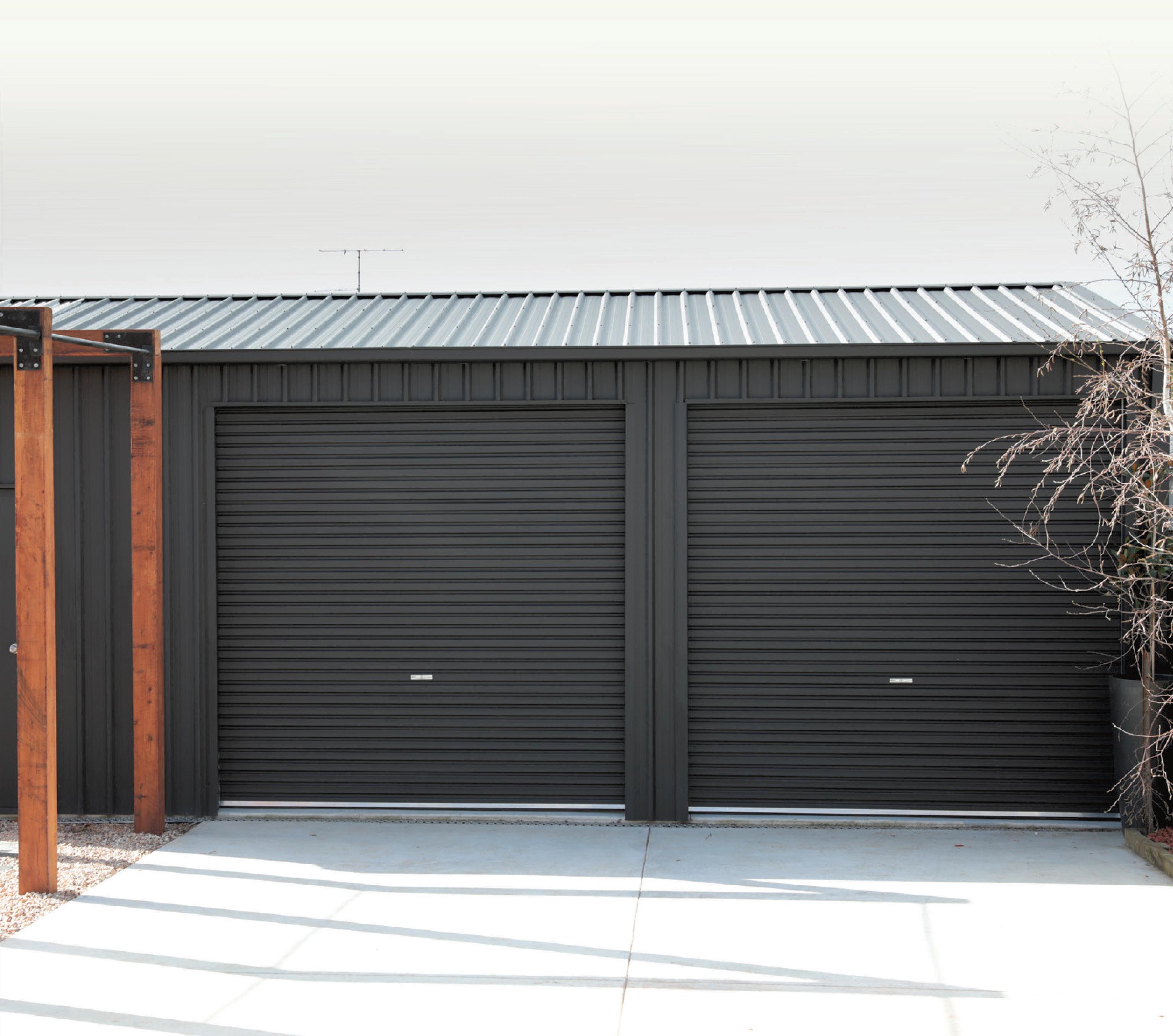
GIPPSLAND'S livestockindustry could eventually be at risk of morewild dog attacks, with recent changes in the state’s dingo ‘unprotectionorder’ laws, an antidingo campaigner believes.
The state government said last month that effective from March 14, adingo ‘unprotection’ order will end in north-west Victoria and will remain in place in easternVictoria until October 1, 2024.
The wild dog component of the current Fox and Wild Dog Bounty Program will also not continue in the north-west, although therewill be no changes to the fox bounty in the region.
The governmentsaidthe decisions follow new research, strong advice and the effectiveness of non-lethal dingo control methods to protect livestock.
Victoria’s WildlifeAct (1975) Order In Council ‘unprotects’ the dingo on private land, and on public land withinthree kilometres of the privateland boundariesto publiclands,enabling baitingand trapping
The government said it is helping protect avulnerablepopulation of dingoes in Victoria’s north-west while ensuring farmers areable to protect their livestock. Farmers in the north-west will be supported by a$550,000 investment to adopt alternate non-lethal control methods via apilot of measures, such as exclusion fencing and guardian animals.
Thisfunding would alsosupportthe management of other pests including feral goats, wild pigs and foxes, the state government said.
Outside the north-west, in other parts of Victoria, dingo control measures will remain unchanged -giving stability to farmers in need of protecting their livestock,the government said. And the review into the government’s wild dog management policies will be finalised in the next six months and consider the new research alongside the impacts on livestock.
The chair of the National Wild Dog ManagementCoordinationCommittee
GeoffPower, said the government’s decision had left sheep and cattle producers in the region ill-equipped to prevent wild dog attacks on their livestock.
Mr Power said the decision could have a severeimpact on livestock producers in the north-west region, and it was extremely disappointing that industry was not involved or consulted in this decision.
“The economicand environmental impacts of wild dogs aresignificant, not to mention theemotionaltoll on producers when they experience attacks on their livestock," he said.
“Removing the dingo unprotection order in the north-west could be the first step in undermining the state’s $4.5 billion sheep andwool industry and the 9200 jobs that it provides for Victorian residents."
With the dingo unprotection order remaining in place for easternVictoria until October 1, 2024, Mr Power said industry

would continue its attempts to engage with the stategovernment during the remainder of the review process.
“For industry, it’s not about eradication of dingoes, it’s about control. Whilethis decision is devastating for producers in north-westVictoria, the NWDAP coordination committee is hopeful that it can work with the Victorian government during the remaining six months of the review to find abalanced approach to wild dog control in the state,” Mr Power said.
The National Wild Dog Management Plan Coordinator,GregMifsud, said without the ‘unprotection’ order in north-west Victoria, it’s only a matter of time before wild dogs spread to other parts of westernVictoria.
“For industry, this decision is the realisation of their worst fears - of being almost powerless to protectthe welfare of their animals from wild dog attacks. It begs the question of when does the welfareofone animal trump the welfareofanother?” he said.
“The reality is that the dingo unprotection
order providesa balancebetweenwild dog control and dingo conservation. The order only operatesin1.6 million of the 4.7 million hectares of public lands in the east and northwest of the state, leaving over 3.1 million hectares of public lands including state forest and national park where dingoes arefreefromlethalcontrol."
The Animal ProtectionOrganisation, Humane Society International (HSI), welcomed the government’s decision, the introduction of control permits and the cessation of the bounty of $120 per dingo pelt.
HSI Australia’shead of campaigns, Nicola Beynon, said the body congratulated the Allan government for bringing “these callous and outdated dingo measures” to an end in north-west Victoria.
“Now we need to see an end to the unprotection order in the rest of the state,” she said.
“Dingoes areanimportant apex predatorin the landscape and areofhigh conservation value due to theircultural significance and
evolutionary role in regulating ecosystems.
“They areintrinsically linked to the health of many ecosystems, and by suppressing cat and fox activity, can have amuchneeded positive impact on the survival of many other Australian species.
“Weare pleased to see funding for landholders to assist with non-lethalmeasures for dingo management. With native wildlife under serious pressureinour landscapes, we can no longer be complacent about their survival, let aloneincentivise them being killed.”
Lastyear, HSIAustraliapublished a guidebook for landholders called Predator Smart Farming that outlines non-lethal strategies for dingo management.
One such strategy is the use of guardian animals, like Maremmadogsand donkeys, to protect farmed animals from predators.
HSI said the partial revocation of the unprotectionorder comes as Animals Australia preparesacourt case to challenge the order across the state.
Beef Central





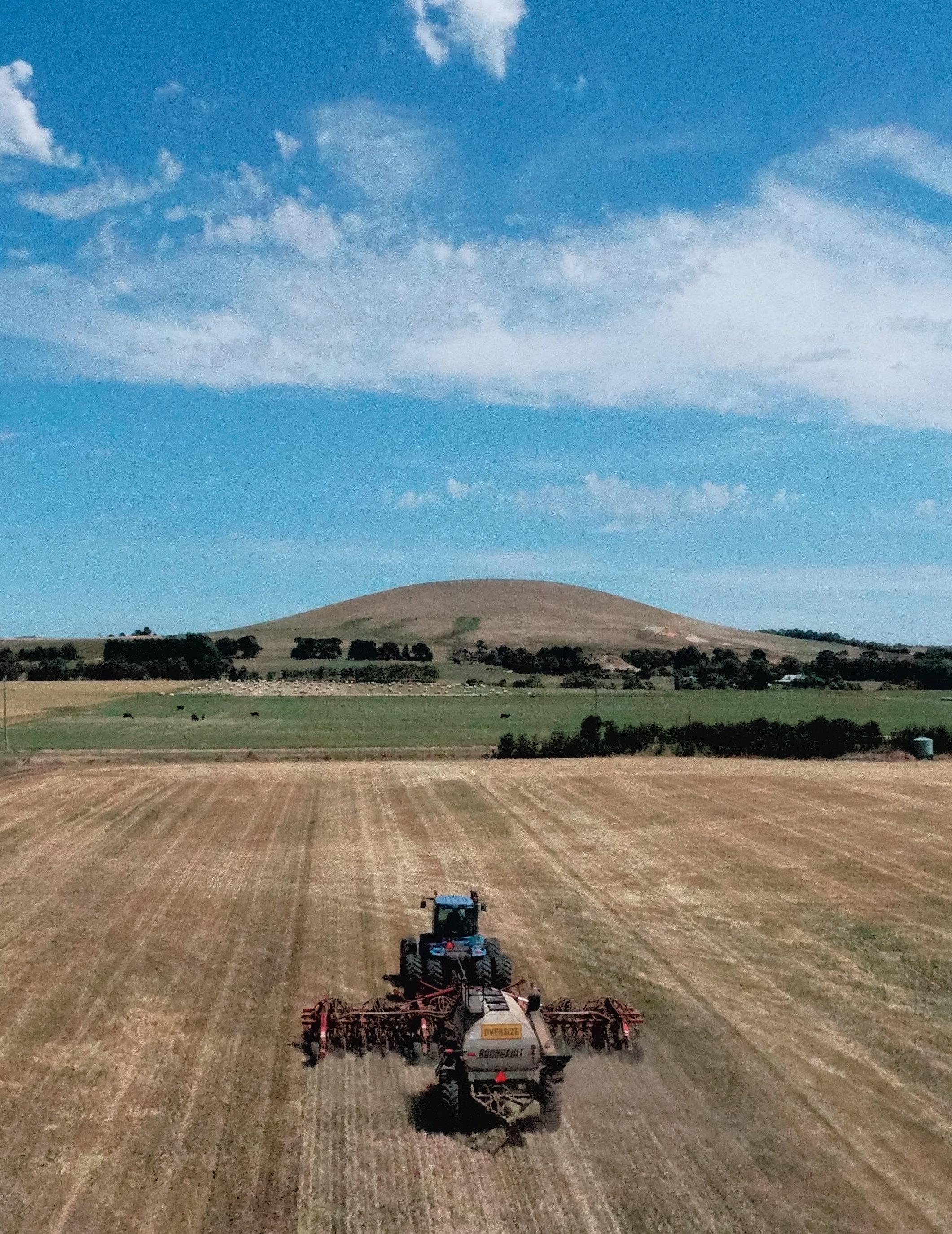
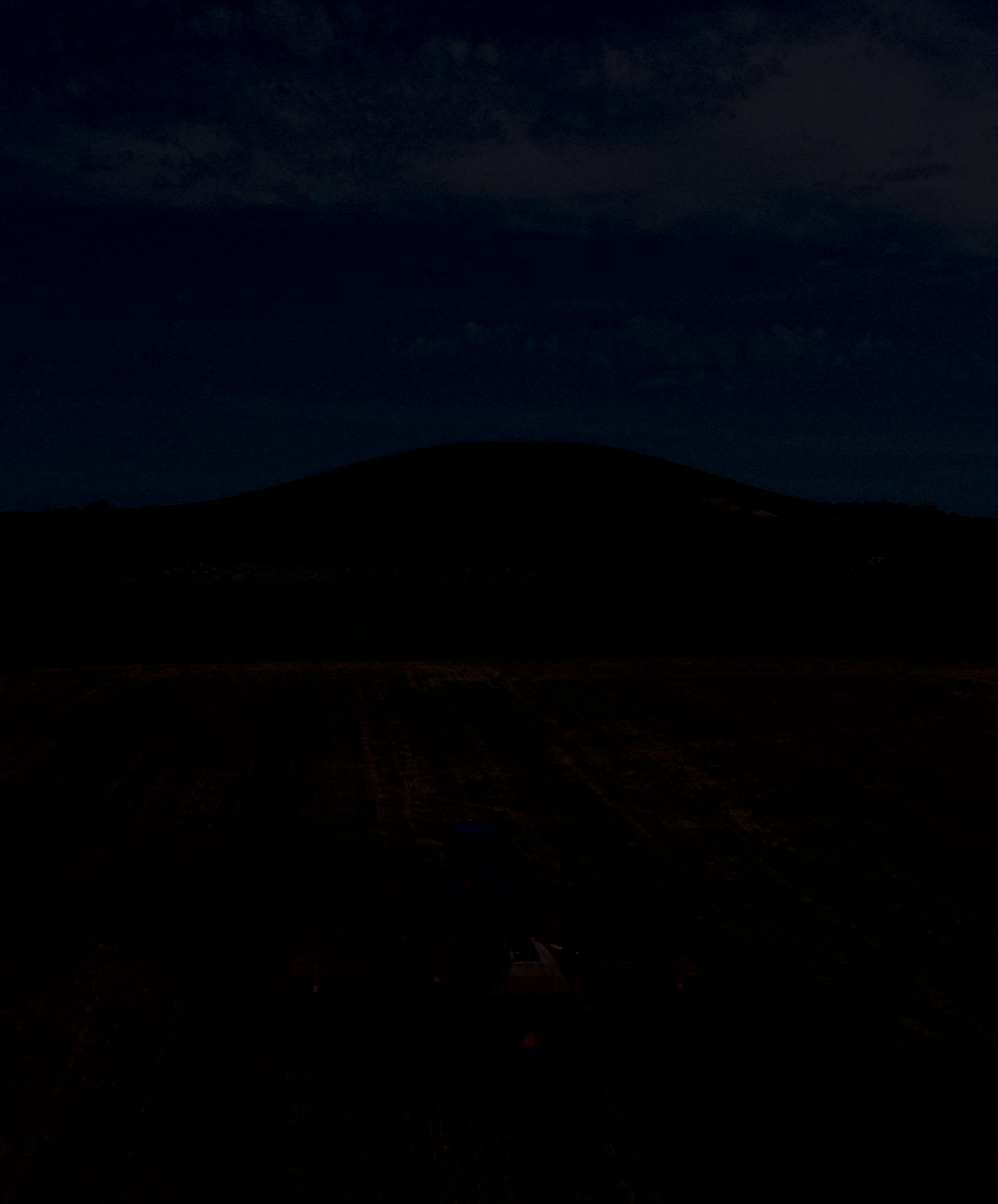



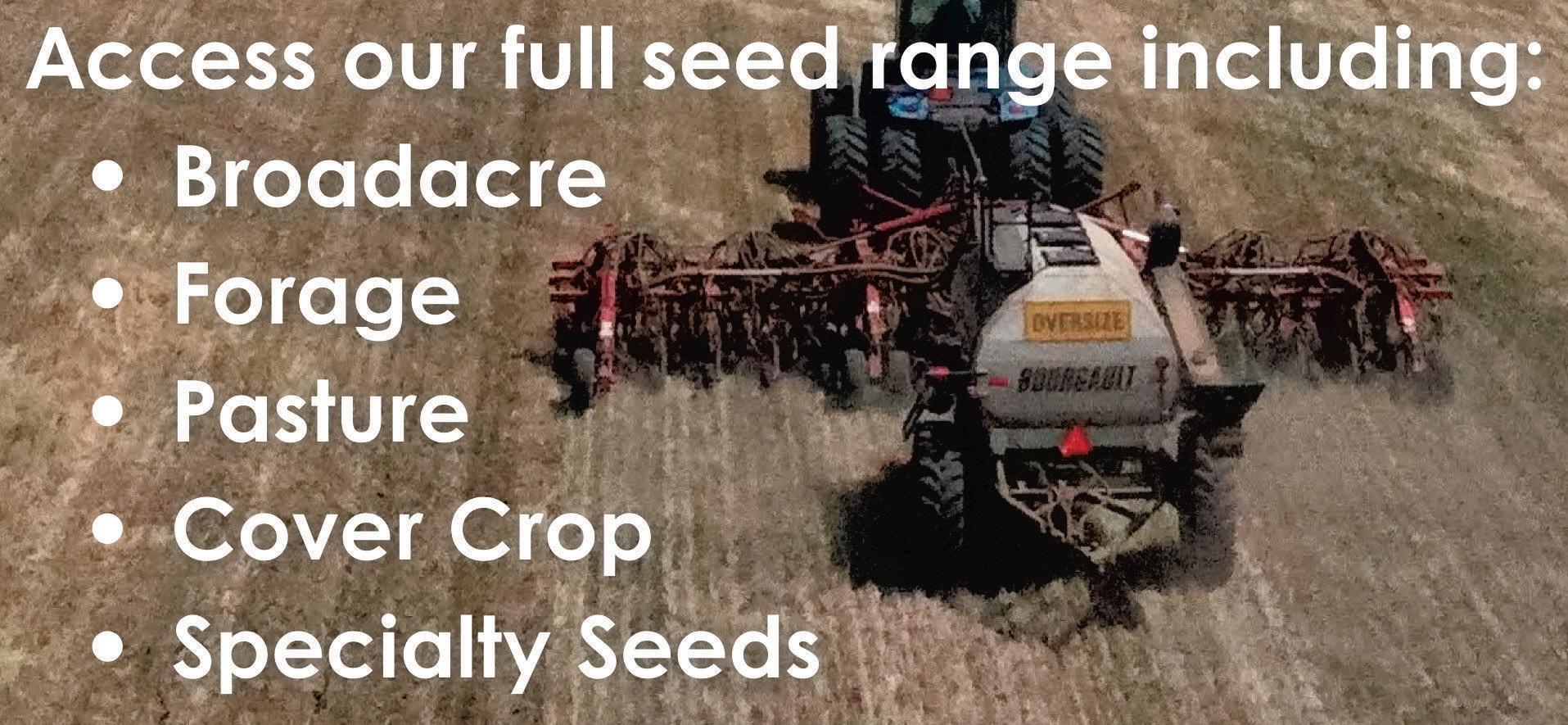



THE Cummaudo family says the storm thatflattened Mirboo North on February 13 was unlike anything they had ever seen.
The family potato farmsuffered the biggestdamagetheyhaveeverexperienced since it was established in 1959 by potato patriarch TomCummaudo. With 30 acres of crop gone, infrastructuredamage, and ahome lost, the Cummaudos aredoing it tough.
South Gippsland soil has been producing Victoria’sbest produce, but many farmers in Mirboo Northfacecompromisedyields following the storm.
The crop on the Cummaudo farmwas about 60 days old and is normally grown to around 120days. The stormraged through town as the potatoes reachedonly halfway through anormal growing cycle, leaving this year's harvest with much smaller potatoes and the owners with ahuge loss.
Tony Cummaudo, second-generation farmer and managing director at the farm, said the stormhad caused havoc on the family business, losing 30 acres of potatoes. At around$500to$600for atonne of potatoes and starring at abarrelof around 12 to 13-tonnelosstothe acre due to undersized and damaged crop, the Cummaudos are uncertain ofwhat this year’s harvest will look like.
The hail that came with the stormwas the real culprit behind the damage -some the size of golf balls came through and laid waste to the plants. The leaves that provide energy and nutrients for the plant were severely damaged.
The team at Cummaudo farms wereon damage control immediately after the storm as they sprayed fertiliser and a fungicide and added extra nitrogen in an attempt to get the leaves to re-shoot.
“It’s sort of like achemo for cancer -it ain’t gonna cureit,” Tony said.
All the Cummaudos can do is sit and wait with no reassurance that the extramoney, time, love and careinto the crop will yield any benefits.
“Wewon’t know until we harvest it -we

won’t know how they’ll come out like,”Tony added.
The potatoesdamaged on the Cummaudo propertywereprocessingpotatoes,and Tony is unsureifthe processors will take the undersized potatoes as they still have to meet certain crop standards.
The crop damage was just the tip of the iceberg for Tony, as his home was left depleted after the storm.
“I was 5(kilometres) away from my house on the north side ofMirbooNorth and I seen the stormcoming in -Iwould’ve just thought it was atad worse than anormal storm…nothing to worry about,” he said.
“I didn’t realise until 10 minuteslater when Igot aphone call saying my house roof was gone.
“When Itried going into town and there weretrees down everywhere, Iknew then it skyrocketed into something moresevere.”
With shardsof thetin roof blown50 metresaway fromits original place and with insulation and wiring scattered around the property, Tony can’t begin to clean up in fear of hishealth with arisk of asbestos.
“I justwant that security beforeIstart touching stuff,” he said.
Though Tony’s insurer has assessed the damage and secured atemporary tarp (tarpaulin) over the house, the hail has significantly damaged the home whereTony had raised his family.
“Thelounge room in particular- it just stunk I don’t know if the TV and all that work in therebecause they all got wet, and we haven’t gotten power in theresince,” he said.
Tony is concerned about potential mould but cannot begin clearing his family farmhouse until the roof is tested for asbestos.
Tony hasn’t had the time to worry about his home; he is now renting aplace in town; his main priority iskeeping the spuds going to maintain the family’s livelihood.
When speaking about how much damage he had sustained to his property, Tony said he couldn’t say, but he expects the cost to be extensive.
“You either laugh or cry - you gotta stay

positive ‘cause so many things can happen,”
In true Mirboo North spirit, Tony faced his challenges with asunny disposition, not willing to bend to the extent of the storm's force.
Despite doingittough at the moment, the Cummaudo family has leaned on each other for support in this tough time.
“It’sgoodtoget ideas from each other, support each other,bring each other up,” he said.
The stormbrought down gigantic gums and pine trees over the fence line, causing significant damage to privateproperty and fencing. Tony said he would liketosee some support from thestate government in terms of clearing farmland and fencing, with the cost of the stormonday-to-day farmers already insurmountable.
“You know the wish list -itwould be nice to get something on my yield of potatoes, but Iknowthat’s not going tohappen,” he said.
Agriculture Victoria has been in contact with local farmers but has not announced any type offinancialsupport for those struggling after the disaster AgricultureVictoria told the Express that they have been in contact with local industry and networks attemptingtounderstand the impacts of the storm.
An Agriculture Victoria spokesperson saidthe focus in thefirst weekafter the stormwas helping farmers restoreessential services and collecting information on the impacts on rural landholders.
Landholdersare encouraged to report agricultureloss and damage due to the storms by using the online impact assessment formon the AgricultureVictoria website.
The Cummaudo arecertainly not alone in their struggles; another local potato grower, Paul Giardina, alsoexperienced significant crop loss.
“The storm, when it hit, it hit quite hard. We hadalot of hailand wind,and it’s damagedthe shed, infrastructure, pine treesalongfencing, and worse of all, the hail damage has hit 65 acres and basically

wiped them out,” he said.
“The stuffthat was planted at 60 days was belted; it's green, but it was belted; it’s sort of doing nothing. The rest of the paddock, which is about 75 per cent, is whipped out; there’s nothing there, it’s just all dead.”
“Because of the wind and hail was so hard, it has exposed spuds …everything it has exposed has got holes in it.”
Mr Giardina told Gippsland Farmer he was frustrated with the lack of assistance from the industry as he, too, is facing a huge loss to his livelihood.
“There’s no assistance Iknow that’s coming our way for farmers,” he said.
“Unfortunately, we’reinasituation where Idon’t think we’regetting looked at -we’re bypassed.”
“There’s not much negotiation;all I gotta do is try and salvage what we sort of can -unfortunately, the size isn’t gonna be there- these werelate, late planted, so they’regonna be on asmall size. Small size is less money, whichinturnisless income -soit’s tough going.”
Known to be self-sufficient and resourceful, these farmers have had no time to dwell on the past month's eventsand have moved on with getting the job done.
Priding themselves on their produce, Tony and Paul have no choice but to get up and get on with it, as they would say,but things arecertainly notgetting any easier for local producers.
“It’s gettingharder and harder andharder …the thing is you’ve got rising costs, and produce is really stable,sothe last thing we need is an event like this whereit actually whipped us out to adegree,” Paul said. Thesefarmers need to continuetopay the wages of the local workforce, and they stillneed to put bread on the table for themselves and their families.
Although it’s ajuggling act, the two generational farmers stand tall in the face of adversity, ready to pick up the pieces and do it all again for next season.
Right now, they’rejust hoping this oncein-a-hundred-year storm doesn’t come back to bite them again.


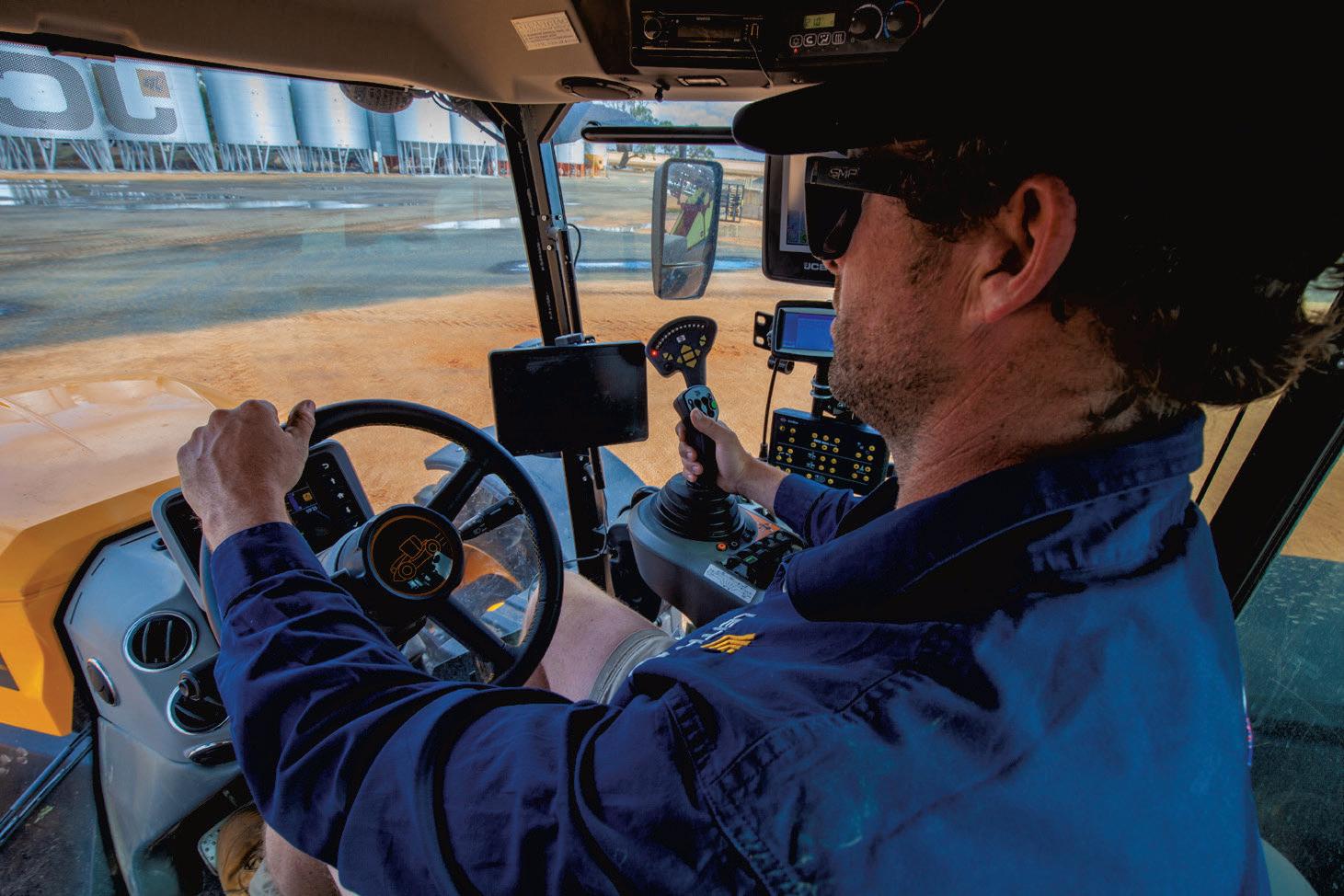


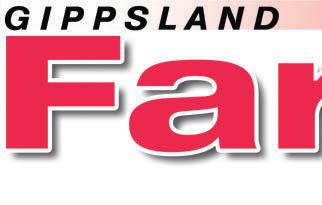



1 Baby dog(coll) (3)
3 Linguistic (10)
10 Zeppelin (7)
11 Bedbound (7)
12 Stimulus (9)
13 That following (4)
15 Africanhorned animal (10)
17 Agricultural land (4)
19 Oldsailor(coll) (4)
20 Taking over leadership (10)
23 Germanautomobile manufacturer (4)
25 Work independently(9)
27 Speech (7)
28 Ships (7)
29 Expert (10)
30 Idiot boxes(3)

Using
be included and each letter
No colloquial or foreign words. No capitalised nouns, apostrophes or plural nouns ending in “s”.
Today’sAim:
18 words: Good
27 words: Very good
37 words: Excellent


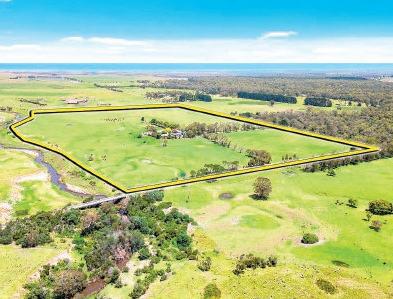


The Gippsland Farmer newspaperhas played apivotal role in the success of TTMI across Gippsland. As atrusted dealer of tractors and farm machinery, we have come to rely on the newspaper’s extensive reach, professional services, and exceptional customer careto effectively promote our products and connect with the Gippsland farming community.
The Gippsland Farmer has been instrumental in helpingusshowcaseour offerings into our key market demographic. With their comprehensive coverage of all things agricultural, the newspaper has provided us with apowerful platform to reach farmers, growers, and industry professionals throughout the region. Their commitment to delivering high-qualitycontent and relevant news has created areceptive and informed readership, giving our advertising efforts even more
Paula,
























DOWN









1 Actofstealingother’s work (10)
2 Narrow-minded (9)
4 Pleasure (9)
5 Doubly (5)
6 Gulch (6)
7 Sepals of aflower(5)
8 Vein of metal (4)
9 AJapanesereligion(6)
14 Literary assistantwho copies manuscripts,etc (10)
16 Us (9)
18 Relative position(9)
21 Thebestat(6)
22 Beachgoer’stwo-piece (6)
24 Father’s brother (5)
25 Ultimate(5)
26 Inserts(4)




Moreover,I am grateful for Paula’s consideration of TTMI for special advertising features and promotions.She hasgoneabove and beyond to provide us with opportunities to highlight our business and offerings in unique and creative ways. Her keen understanding of our industry and unwavering support havetruly made a difference in the visibilityand success of our advertising efforts.
Iwould highly recommend The Gippsland Farmer newspaper to any business in the agricultural sector seeking effective advertising solutions. The newspaper’s wide readership, informative content,and exceptional customer caremakeitanideal platform to connect with the farming communitythroughout Gippsland. We look forwardtoacontinued partnership p p with The Gippsland Farmer,confident in the knowledge that our advertising needs areinthe best of hands.






















WHILE Jigsaw Farms, based near Hamilton in westernVictoria, wereone of the pioneers of carbonneutral agriculture, anew study of the operation has highlighted some challenges ahead to maintainits neutralstatus.
The Hamilton-based company is comprised of six properties totalling 3500ha, producingbeef cattle, fine wool, prime lamb and wood. Owners Mark Wootton and Eve Kantorsay the companybecamecarbon neutral in 2011 and has doubled its food and fibreproduction since 1996.
Mr Wootton said the carbon neutral status has allowed them to sell into premium markets, with acarbon neutral wool brand and selling into the Coles’ Finest beef range. He said it smoothed out fluctuations and gavethemabout a20pcpremium in the long-term
“This has been achieved primarily through carbon sequestration through tree plantings which serve multiple purposes of improving water quality, biodiversity and shelter belts, as well as providing an additional income stream through plantation forests,” Mr Wootton said.
“This commitment to carbon neutrality has not compromised our productivity and profit gains. Despite 20pc of the properties being planted to trees, Jigsaw Farms runs at double the productivity of the region.” Keepingcarboncreditswithinthe business
While JigsawFarms has had carbon sequestration projects set up for the past two decades, Mr Wootton and Ms Kantor have decided not to sell carbon credits on the open market. Instead, they use carbon sequestration to offset their livestock emissionsand make carbonclaims on their products –apractice called insetting. “Science-basedtargetsthatbusinesses
who purchase our productshave signedup to aredemanding lower carbon products,” Mr Wootton said.
“They currently pay apremium price for the supplierswho havealowerfootprint than others. By insetting our carbonon farmweare moreattractive to these markets. As aprice-taking business, if Ican open myself to morecustomers then Iam going to take that opportunity.”
In 2022, the NationalFarmers’ Federation and Australian Forest Products Association tookMrWootton to the Conferenceof Parties (COP) summit in Egypt. He said the demand for low carbon food and fibre was very prominent.
“My short take home from the experience is that the international rules areset in place and that as an industry we need to keepfocused on operatingwithinthese

markets,” the Jigsaw Farms leader said.
“Carbon neutrality should be key driver for our research and development going forward.”
How Jigsaw became carbon neutral
Jigsaw has hadalong association with well-known University of Melbourne professor RichardEckard, who has played amajor role in the development of greenhouse gas accounting for livestock operations.
Prof Eckardhas completed two studies of the operation. The first in 2016 concluded thatan efficient grazing operationwith tree plantings couldbecarbon neutral, even with high stocking rates. The second study,which is currently going through the peer-reviewand publishing process, has highlighted somechallenges for the operation, which Mr Wootton said he was keen to work through.
“It has shown that we arenolonger carbon neutral, although arestill 85pc to 90pc thereatthe moment –this is due to anumber of reasons,” he said.
“The first reason is that in the time between the studies the calibration has increased formethane considerably. Meaning the international science community have recognised methane as amorepotent gas than first thought.
“The second reason, is that oursoil carbon stores (average 3.5pc SOC) areno longer used in the methodology because they are at capacity, can be transitional andare rainfall linked.
“Primarily it is becauseofthe declining rates of sequestration taking place in our plantations as they mature. This declining trend will continue, be it slowly, unless we improve our feed efficiency, our genetics, plant moretrees, or use afeed additive to reduce methane.”






THE Victorian Government is again offering grantstolandholders in Gippsland to assist in establishing trees for timber, as part of abroader program to encourage and support the establishment and management ofplantations on farms to contribute to futuretimber supply.
Timber plantations can be established as woodlots, shelterbelts or wide-spaced plantings(or any combination ofthese) and be ideally placed within the context of awhole farmplan.The minimum eligible plantation establishment area for agrant application is three hectares.
An opportunity also exists to apply for a one-offconsultancygrant, to assistlandholders should theyrequire specialised
and specific advice in designing and planning aplantation establishment project.
Grant applications opened on March 4, 2024 and will close on March 7, 2025
During this open period, grants willbe assessed and administered with the interested landholders progressively.
Peoplewho areinvolved in agroup or organisation (eg. Landcare) and would like moreinformationabout the grants or farmforestry generally, ADepartment of Agriculturefarmforestry officers can present in agroup setting.
Further information, including grant forms and guidelines is available at the VicForests website and on requestvia email.



ALL Victorians can help protect our foodgrowing communities,our biodiversity, gardens, lakes and places of culturalsignificance by helping to stop the sale of two of the world’s most invasive aquaticweeds, according to AgricultureVictoria.
Agriculture Victoria's Biosecurity Manager High Risk InvasivePlants, Angela Constantine, said theongoing illegal trade of water hyacinth (Eichhornia crassipes or Pontederia crassipes)and salvinia (Salvinia molesta) was putting the state at risk.
"We’rerunning acampaign helping to raise awareness about the risks of theseplants, as they can cause extensive damage by choking rivers, dams, lakes and irrigation channels," Ms Constantine said.
"The continued trade of these plants helps them to spread fast and once introduced to anew area, these weeds quickly cover waterways. These weeds maylookattractive, buttheir abilityto quickly spread harms native plants and wildlife, and reduces water quality for farming and recreation."
Waterhyacinth andsalviniaare primarily spread by peoplebuyingand selling them to go in ornamental ponds, dams and aquariums.
"It is illegal to buy, sell or give away water hyacinth or salvinia in Victoria, howeverinmostcaseshomegardeners areunawareofthe potential harmful impacts of these weeds," Ms Constantine said.
"When you consider that one water hyacinth plantcan produce more than3000seeds over summer,you can see how easily they can be spread from abackyard pond –theyalso have extensiveroot systems that can generate other plants too.
"The plantscan be carried by birdsto other waterways andonce established, theinfestations can be costly and hard to control. Salvinia, also known as 'water spangles', is equally invasive, and can cover an entiredam in just one season."
AgricultureVictoria will safely treat, remove and dispose of state prohibited weeds such as water hyacinth and salvinia, at no cost to the land holder
If you suspect you have water hyacinth or salviniaonyourproperty, please take aphoto of the plant and email it to weed.spotters@agriculture. vic.gov.au,orcall the Customer Contact Centreon136 186.
Youcan also make areport via the AgricultureVictoria website at agriculture.vic.gov.au/waterweeds






Winter forage remainsa crucial concernfor farmers in Gippsland, as pasturegrowth canoften failtomeetthe demandfor feed duringthe cooler months
For farmers lookingatways to address feed deficits,the utilisation of newer plant genetics and diversespecies has become increasingly significant duringthis final autumn planting period.
These advancementsoffer Gippsland farmers another feed tool, providing increased productivity andquality fodder when traditional perennial pastures struggleto keepup.
By opting forwell-sown crops featuring these newer genetics, farmerscan notonlymeetimmediate feed needs butalsocontribute to thelong-termhealthoftheir lands by alleviating thepressurefromintense winter grazing.
Plantbreeders have bred high performing varieties across several usefulspeciestailored to withstand the ongoing challenges of winter feed gaps.
These crops, whengrown successfully,become fodder drivers forfarms of allsizes.
Peter Notman, from Notman Pasture Seeds,has witnessed the success of thesenewerplant varieties across various local environmentsinGippsland
“Whetherit’sinthe cooler northernparts of Gippsland like Cobungra, wettercountrydownatFoster,and many othersin-between, we’veobserved these newer genetics thriving, showing quicker establishment, increased bulk growth,and thenewer ryegrasses prolonged productivity intolate spring andearly summer,” notes
Mr.Notman
Popularchoices among farmerscontinuetoinclude annual and Italianryegrasses,valued for their resilience

and reliability in delivering winterand spring forage once established
While annual ryegrass offers rapid winter andspring growth, Italian ryegrass providesflexibility by thriving untilsoilmoisture runsout,often persistingintoa secondyear.
“Notableamongthe newergeneration short-term ryegrasses we’veseen arevarieties like Vibe Rampage, Bullet, and Appeal,favoured for their robust growthand sustainedleafiness throughoutthe season”, praised Mr Notman
Furthermore, introducing improved winter grazing purpose cereals suchas Cooee Oats andSouthern GreenRyecornintopasturerenovation programmes has brought about significant improvements in cereals tolerance to multiple grazings andoverall quality
These two cereals, quicktoestablishand providing substantial bulk feed, havedemonstratedsignificantly better grazing tolerance than older generation varieties.
Gippslandfarmers alsofrequentlyincorporateother speciessuchasvetch,fieldpeas,and annual clovers like shaftal, balansa, and arrowleaf into oatsand ryecorn
Additionally,leafy turnipsand forage brassicaspresent alternativeoptions, with turnips offeringrapidfeed production in 6-8 weeks and servingasexcellent companions to ryegrassesand oats.
Forage brassicas,while boasting high feed value, typically requirematurity beforegrazing, usuallyaround 10-12 weeks post-sowing.
For farmers seekinginnovation, Mr.Notman suggests experimenting withnewergenerationvarietiesor diversifying with different plantspecies
Ultimately,the choice of speciesand variety depends onindividualcircumstancesand objectives, butthere’s no shortageofoptions available to bolster winter feed productioninGippsland.

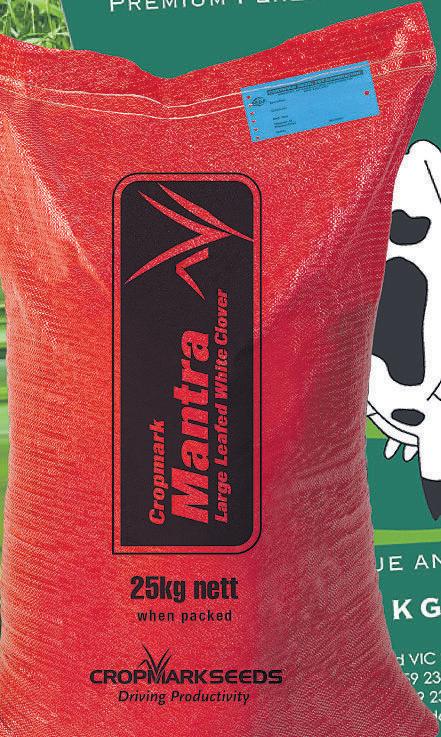
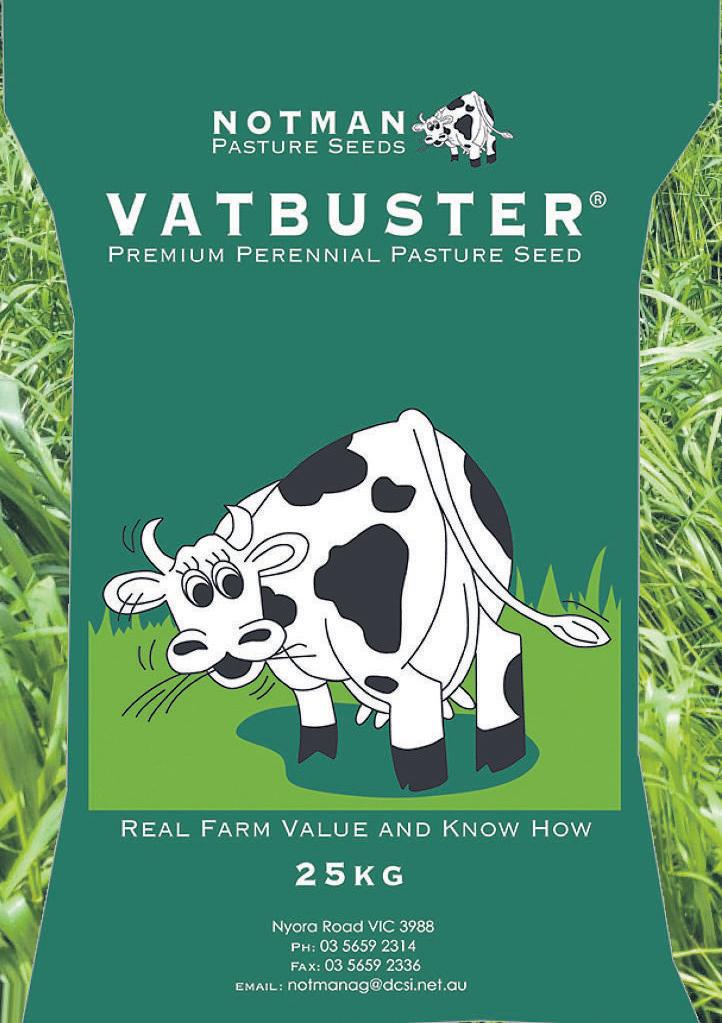






FARM World is ahaven for the farming community and those who enjoy the great outdoors.
People came from all over Gippsland, Victoria,and some even crossedborders to get down to Lardner Park for one of the biggest farmexpos in Australia last month.
Each year,FarmWorldattracts tens of thousands ofpeople to check out many exhibitsonmanydifferent aspectsof the farming world.
There really was something for everyone.
Over the weekend of March 22 to March 24, again, tens of thousands of people came to Lardner Park for FarmWorld.
Patrons wereable to get up close and
personal with experts in certain fields of work, wherethey could be taught simple lessonsor possiblypurchase something straight from the provider
With morethan 100 acres of exhibits available, therewas everything from machinery to equipment, clothing to technology, and a plethora of different vehicles for both road and water
For entertainment, the Equestrian Expo provided anumber of attractions over the three-day event.
The FarmWorld Rodeo returned bigger and better on the Saturday (March 23) evening, and Freestyle Kings Motocrossthrilled audiences across the entireweekend.






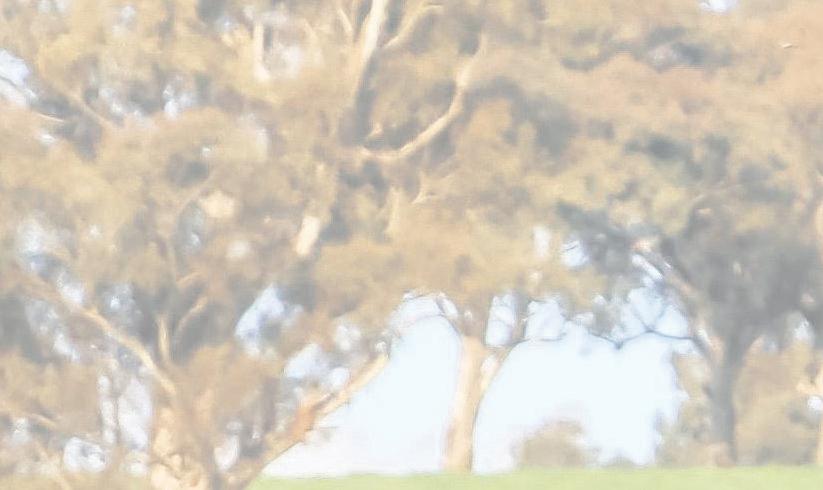




THERE is something about the cosiness of aclassic general store.
First, it's the jingle of the doorbell and the "how're going,love"inviting you infrom behind the counter,followed by aglimpse of the classic pie warmer in the back and afridge stocked with the milk your mum told you not to forget.
Even staring intothe fully stocked icecream freezer at the GoldenGaytimes, Calippos and Drumsticks conjures warm 'fuzzies' of memories that transport you to the summers whereyou'd ride abike to your local with cousins in tow.
But general stores aremorethan pie warmers or alitreofmilk.
Whetheryou reside in the remotest corner of rural Victoria or just astone's throw from abusy shopping strip, the few remaining classic general stores across Gippsland are acommunity's lifeline.
They areapost office, supply basics at a pinch, and they area social hub, best for the fleeting morning "hey, how'regoing's" as you duck in to grab acoffee beforework or school drop off.
In October 2022, apiece of Newry history was bought by tree changers Cheryl and Michael Doyle, or as you'll come to call them if you pop by the store, Chez and Mick.

Since then, they've given the "old girl" –as Mick warmly calls the store–afacelift and injected enthusiasm into what the couple aremaking of their "semi-retirement" lifestyle as business owners.
"It was getting harder to get to the grandkids with COVID and everything, so we thought, let's just go and have alook. We didn't wanna move into the grandkid's back pockets but to be somewherecloser," Mick said.
It is no secret that COVID-19 altered how people value and spend their time in the present. For the Doyle's, being closer to their children and grandchildren prompted their move to Gippsland.
The couple, who herald from Wahgunyah
on the Murray River,said that while the move broughtthem six hoursfurther south, they understand the small-town mentality.
While admiring the new paint job and the coffee bars wrapped around the veranda pillars,the coupletold the Gippsland Times they arecommitted to their new community.
"Part of being hereistoshow the public that we'reinvesting [in the community]," Mick said.
"We'regettinggood feedback.It'sabout getting some life into the town;wedon't wanna come in hereand turnit into McDonald's or anything like that, but to get it looking fresh and get people's curiosities going."
Chez added, "We'reabout community. Community means alot to us, you know. We've come from small, we haven't come from large thinking we'regonna take over the world. No, it's about doing this for everybody."
As Cheryl began atour of the store's interior,explaining the idea behind the informal just grab and go 'book swap', the phone trill signalled acustomer's call.
Afew seconds later,with spectacles perchedonthe bridge ofhis nose, Mick peered out of the post office nook tucked into the wall by the store's entrance.
"You got any onions?" he asked his wife
(a local that had just been in to pick up a paper was calling back to enquire).
"I've got one," Chez replied.
Afew minutes later,she dashed outside to hand-deliversaid onion to the customer imploring her to stay in the carthroughout the transaction.
Whether it's pouring their moneyinto fixing up the 100-year-old store's façade with new signs, afresh lick of paint, and custom coffee benches courtesyofsome local handiwork, the couple certainly have the passion and drive to make the Newry General Storesomething locals can not only remain proud of, but rely on into the future.
The Newry General Storehas been apillar of the communityfor morethan 100 years, and it is atestament to the community that, unlikeothers of its kind,the storehas retained its classic charmand familiarity.
"We'reall about the history as well," Mick said.
When breaking ground to re-stump the store, Mick found old Sale bricks, whichhe said, "Might not mean much to people but wereactually made in Sale back in the day, and so I've put em all around the garden."
Pridegoes alongway in small communities.
Whether you'rethe proud business owner or the customerwho relies on it, local stores arethe lifeline of our communities.
Stefan
BRADLEYNEWRY'S newly completed upgrade of its irrigation pipeline allows up to 130 megalitres of water per day to be distributed to local farms, saving time through amore efficient and faster system.
The Newry Pipeline upgrade, which was completed last month, is part of an infrastructureprogram to modernise farming in Gippsland.The $39.8millionpipeline is part of the $62.6million Macalister Irrigation District Modernisation Phase 2 Project and replaces 100-year-old open channels with morethan 17 kilometres of new pipeline and 50 automated outlets.
The Phase 2program aims to deliver more than 7200 megalitres in water savings and drive vital investment in on-farmefficiencies, improve farmproductivity and make businesses moreclimate resilient.
Waterhas been deliveredtofarmers through the new pipeline since August. With the decommissioning of legacy infrastructurenow complete, Southern Rural Water managing director,Cameron FitzGerald,said this was agreat modernisation milestone.
“This project has been asignificant investment in Newry and the Gippsland farming community,” Mr FitzGerald said.
“It’s been a once-in-a-generation opportunitytomodernise infrastructureand provide tangible benefits to our customers well into the future.”
The new pipeline generates water savings, implements best-practice water use, invests in on-farmefficiencies, improves farm productivity, and enables businesses to be moreclimate resilient. The upgrades help save water that was lost due to evaporation and leakage fromthe old set-up. It also stops harmful nutrients from entering the local streams and the Gippsland lakes.
On the ground, farmers will save about 90 minutes aday from being able to access the water faster
Mr FitzGerald said the Macalister Irrigation District Phase 2 modernisation works would not only deliverwater savings butalsoencouraged farmers to implement best practice irrigation and increase their productivity.
Recently, the Newrypipeline's system reached 130 megalitres -its peak flow. The DepartmentofClimate Change, Energy, the Environmentand Water says that to maintain the system's efficiency, users should plan ahead and cancel orders promptly to free up capacity;communicateearly for order extensions; and order water through the night for efficiency.





Work on the Newry pipeline started in November 2022 and its completion marks a major milestoneofadecade-longinfrastructureprogram in the Macalister Irrigation District.
Mr FitzGerald said Gippsland isone of Victoria’s most important food bowls and thereisnow achance to imagine what else could be achieved to securethe region’s long-termfuture.
“Work has alreadystartedtoconsider new opportunities through SouthernRural Water’s recently announcedMacalister Fresh Strategy,” he said.
Mr FitzGerald said SouthernRural Water was committed to working with partners, customers, and the community to unlock further economic, culturaland environmental benefits in Gippsland.
The Macalister Irrigation District ModernisationPhase 2Project is jointly funded by Southern RuralWater, the federal government through the National Water Grid Fund and the state government.
The Macalister Irrigation District modernisation project began in 2013 and was broken into Phases 1and 2tofocus on the most important work for water savings and service improvements.
Phase 1A includedconstruction of the Willang Yarn balancing storage in Denison,
the upgradeofregulators in the NambrokDenison supplysystemand upgrades to most Easternsystemchannelsand all Heyfield channels. Approximately 13.3 gigalitres in water savings was achieved The works package started in 2013 and finished in June 2017.
Phase 1B was delivered in four stages. This included anew offtake on the Main SouthernChannel, installation of38 km of new pipeline in the SouthernTinamba supply zone, and the upgrade of 28 km of existing channels at Riverslea. An estimated 9,600 gigalitres in water savings was achieved. The works package commenced in 2017 and was completed in 2020.
Phase 2program of workscommenced in 2020 and includedchannel upgrades at Stratfordand Boisedale. Pipe was included in the vicinity of Boisdale-Newry Road and the Back ValenciaCreek Road andold manual wheels werereplacedwithnew modernised outlets at four locations.
Three regulators werealso upgraded in the Main NorthernChannel at Football Lane, Three Chain Road and Upper Maffra Road. The completion of the Newry Pipeline upgrades represent amajor milestone for Phase 2, but works areongoing, with more projects to be announced in the future.

















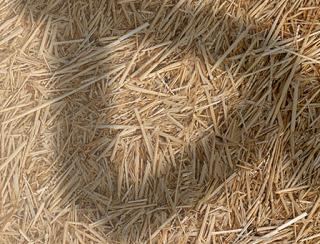
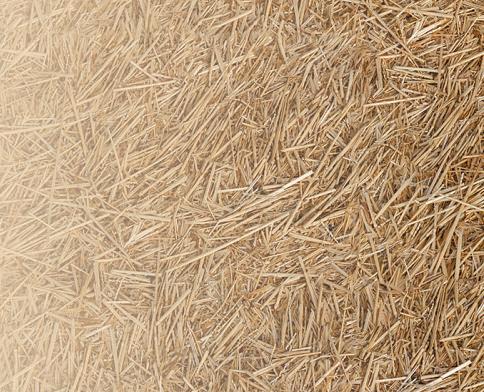

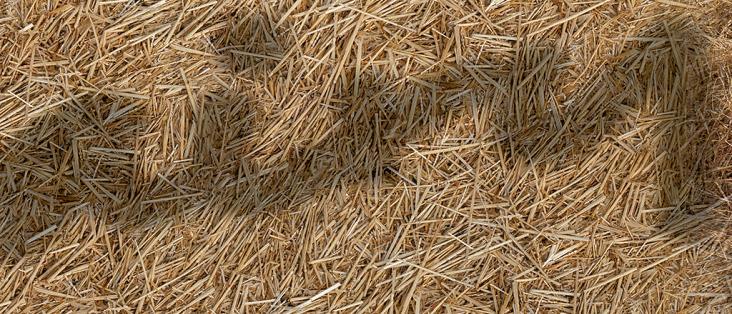

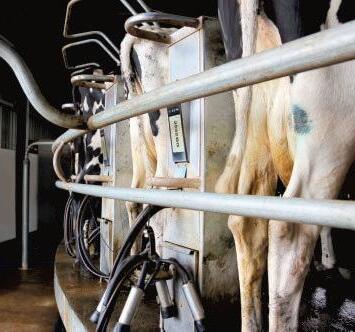
Dairyisone of Australia’smost important rural industries, producing about 8.8 billion litres of milk per year and directly employing approximately 46,200 people.
It is the fourth-largest rural industryinAustralia generating $4.4 billion in farmgate value.
The majority of milk production occurs on the south-east seaboardinVictoria, New South Wales, and Tasmania.
Australia exports approximately 35 per cent of its milkproduction, with exports valued at $3.2 billion.
Alargeproportion of exportsare in the formof value-added products such as cheese,butter, ultra-heat treated milk and milk powders.
Although Australia is asmall producer of milk it is the world’sthird largest dairyexporter as 50 percent of production is exported.
Victorian dairy facts
The dairyindustryinVictoria produces amassive 62 percent of Australia’smilk production.
Dairying is the largest agricultural industryinthe state.
Over 3000 dairyfarms provide work for 14,800 workers on farms and another 11,000 in milk producing factories.





Inionba Pastoral in Kyabram Victoria have installed arobottohandle the process of sprayingcow teatstoprevent mastitis infection in their herd.
AFanuc M20iDwas selected for the task due to its compact size and generous reach, and was supplied with an integrated encoder which gives fully synchronized movement with the rotary platform.
This installation is on a100 stallrotaryplatform,and the robot comfortably performs its function withspray time of 2seconds andtotal stall speed of 4seconds.
With its relatively low cost of implementation, it makesitjust as suitable for smaller platforms and herds.
Implementing the robot into this process freesupavailablelabour to complete other varyingday to daytasks and also eliminates the numerous OHS risks associated with the task.
Therobotic teat spraying system has been designed with easy maintenanceinmind, and utilises smart, robust, industrial sensors to identify when and what spray path to follow, making it far moresuitable for Australian milking parlours.
The robot system operates with no external PLC, makingaverysimple lowcost implementation with high ROI for the owners of Inionba Pastoral.
The Fanuc M20iD/35 robot is perfect for teat spraying applications due to its large working envelope, small foot print, and high speed.
Fitted with SDLP,itissuitable for the rigors of adairy parlour
If you arealso looking for an intelligent cost effectiveautomated solution to spray cow teats or other dairyprocesses, then Automation Solutions has asolution for you.
Contact us today!























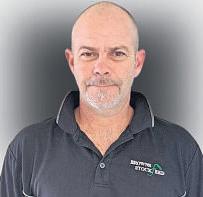









THE team at Lely Center Gippsland installed 35 Lely Astronaut milking robots on Gippsland farms in 2023.

BEFORE: Old dairybeforeretrofit of twoLely robots
know what works and what doesn’t. We have alarge and highly experienced team based on the ground in Gippsland, from robot installers and technicians to robot softwareand farm management experts.
It’sareal supportnetwork.”




And Center Manager Dale Serong says “using existing sheds and yards really cuts costs.
Most of our clients do retrofits.”
“One of our veryfirst customers, the Lockett family of Neerim North, placed two second hand Lely robots in an old herringbone dairy”, says Dale.
“There’sone robot on each side of the old pit.
Dale explains that designing Lely Astronaut set-ups is easy because of the walk-through robot box design they call “i-flow”.
Cows walk straight into the robot stall and the robot armuses a3Dcamera and laser system to meet the cow whereshe is and put cups on.
The box suits all sizes of cows, from Jersey heifers to large Holsteins, they all enjoy freedom of movement inside the box.









Using atwo-way grazing system allowed them to keep the same laneways and paddocks too, and they saw excellent results with that simple set-up.
Then last year they installed six robots on the main farmmeaning that milking is now completely automated on both farms.”
Dale says that another customer undertook averysimilar Herringbone retrofit, and was able to keep the infrastructurecosts outside of the robots to under $30,000, for concreting, plumbing, steel work and the likes.
“Everyfarmset-up is different and you can get into automation without breaking the bank.
Last week, we started up four robots that we installed into adisused herringbone shed.
On another farm, the yardofthe rotary dairyhad aroof over it and then six robots werebolted in.
“We’ve worked with enough systems now,optimising them over time with the clients to get the results they’reafter,we
Besides the four percent improved cow flow compared to no i-flow,the time for cups on is quick due to the robot remembering the mapping of the last 10 milkings of each cow
“This is sixth generation technology
Lely’sAstronaut milking robots have been around for over 30 years now
It’sthe only brand dedicated solely to robots.
So the current A5 model is the result of refining that technology
“For example its hybrid armuses 30 percent less power than previous models, which werealready the most efficient by comparison.
And its water and electricity efficiency areexcellent.
These arethe advantages that come with decades of research and development.”
Lely Center Gippsland will be at the East Gippsland Field Days, Bairnsdale Aerodrome, from 5-6 April.


BrownWigghas been proudly servicing the needs
By paying close attention to all of your rural business needs and meeting these requirements with avast product range, our professional and courteous staffhavedeveloped a“Can Do” attitude that is second to none.
No
Saving you valuable time and money before the job even begins.
The BrownWigg team also possess ample expertproduct knowledge and problem-solving ability to customise solutions to meet your most exacting requirements.
Thisability to efficiently tailor product and service solutions has transformed BrownWigg into areal“One Stop Shop”, providing atrue value-adding and cost-effectiveextension to the local farming business community
Your local BrownWigg stores arealways first to open, last to close 7daysaweek.
Their extensiveand “Top Brand” range of ruralbusiness and farmsupplies and services coverall of the following areas:
Agricultural Chemicals
Animal Health
Fencing
General Merchandise
Agronomy Services
Power Equipment
Lubricants
With their earned reputation for excellence in the local community,their expansive range of goods and services and their team commitment to you and your

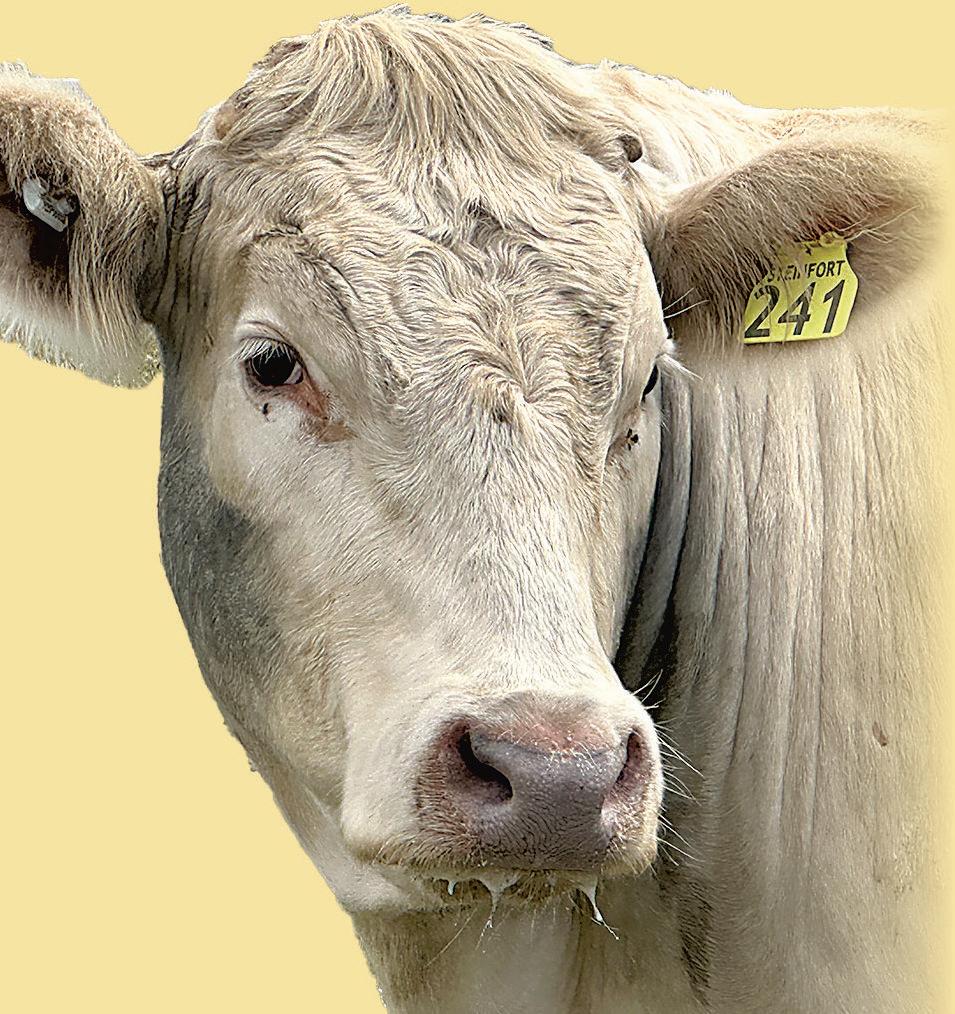
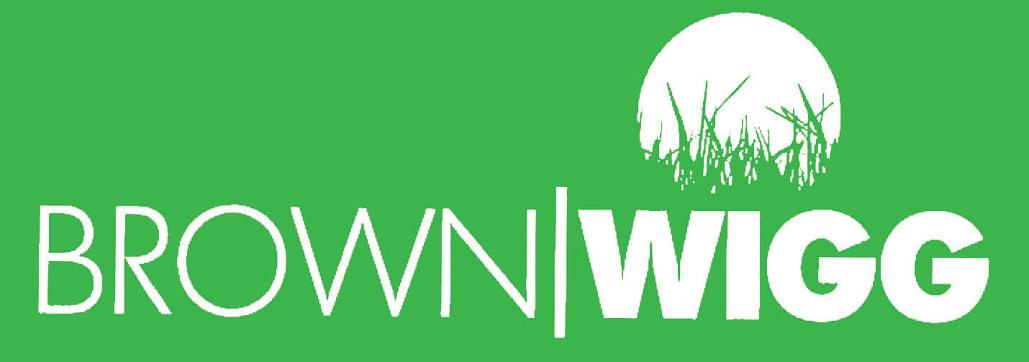


























Itisimportant to get the balance of calcium, phosphorus and magnesium correct for cows during the dryand transition periods to minimise health problems after calving.
Calcium demand is greatly reduced during the dryperiod, as calcium excretion in milk no longer takes place.
Most forage-based diets will be able to meet
calcium requirements during this time of about 0.4 per cent of drymatter intake.
Duringthe dryperiod,phosphorus should be 0.25 per cent of drymatter intake and magnesium 0.3 per cent of drymatter intake.
Continued page 27




BioProVitamin and Mineral DryCow Loose Lick is ascientifically formulated, weatherresistant blend that provides essential Micro and Macrovitamins and minerals to cattle, ensuring that nutritional deficiencies do not limit their productivity and growth.
Only BioProVitamin and Mineral DryCow Loose Lick includes acomplex blend of high-strength probiotics, thiscustom mixture promotes theoverallhealth and performance of cattle by maintaining optimalgut health and immune function.
Utilising the latestinnutritional research, BioProVitamin and Mineral DryCow Loose Lick is areliable solution for maintaining the wellness and optimal functioning of cows between dryoff andcalving.
BioProVitamin and Mineral DryCow Loose Lick also contains Biotin which has shown
to be beneficial for hoof development and strength.
Directions foruse:
Place in free draining container where cattle gather regularly
Allow approximately one feeding station per 25 head.
Alternatively sprinkle daily allowance on silage or other suitable roughage Cattle will lick as required to regulate the intake of minerals in accordance to AD LIB of BioProVitamin and Mineral DryLoose Lick.
Acow will consume around 100 grams per day
For moreinformation contact Mark Moylan on 0437 249 091 www.apsolutions.com.au






During the transition period it is important to make sure that calcium supply is 0 4 to 0 6 per cent of dry matter intake or 40 to 60 g/day for a cow eating 10 kg DM/day
Phosphorus should be increased to 0 25 per cent to 0 45 per cent of dry matter intake (25 to 45 g/day) and magnesium should be increased to 0 4 per cent of dry matter intake (40 g/day)
This is to minimise the risk of milk fever and hypomagnesaemia after calving and ensure cows have the best preparation for their upcoming lactation
Dietary cation-anion difference
Another important mineral-related dietary factor particularly around calving is the dietary cation-anion difference (DCAD) value of the diet
The DCAD is determined by the potassium and sodium content on one side of the equation versus the chloride and sulphur content on the other side of the equation
Potassium and sodium push the DCAD value up, whereas chloride and sulphur push the DCAD value down
Cows in the last four weeks before calving need to have a diet with a DCAD value of around minus 50 (measured in milli-equivalents per kg DM)

When this DCAD target is combined with the calcium, phosphorus and magnesium targets described above, it minimises the risk of developing milk fever after calving
To achieve a DCAD value of around minus 50 in the weeks before calving, cows need to be fed a diet low in potassium and sodium, and high in chloride and sulphur
A low potassium/sodium diet generally requires cows to be removed from grazed pasture and fed a low potassium forage instead Often cows will also need anionic salts supplements which contain chloride or sulphur
A feed analysis for potassium, sodium, chloride and sulphur is recommended for forages to be used during the transition period
This is due to the variability in potassium and sodium content of grazed and conserved pastures
Once cows have calved the DCAD value of the diet needs to be 200-250 milli-equivalents (mEq) per kg DM to minimise risk of milk fever and other health related problems
drumMUSTER, Australia’spioneering stewardshipprogram forthe recycling of AgVet chemical containers, has been at the forefront of sustainable agriculturesince its inception in 1999 in Gunnedah, New South Wales.
Over the years, this initiative has evolved into anationwidemovement, leaving an enduring markonthe landscapeofresponsiblewaste management in the agricultural sector
Since that inaugural collection in Gunnedah, drumMUSTER has achieved aremarkable milestone, havingcollected over 42 million containers, equivalent to diverting astaggering 40,000 tonnes of material from landfills.
With830 collectionsites acrossAustralia, farmers have aconvenient and accessible avenue to responsibly disposeoftheir AgVet chemical containers.
The impact of drumMUSTER extends beyond
waste disposal.
By facilitating the recycling of eligible and clean containers,the program actively
contributes to reducing the environmental footprint of agricultural practices. The recycled materials find new life in the


creation of products like wheely bins, irrigation pipes, bollards and more, embodying the essence of acircular economy
Gippsland farmers seeking to participate in this initiative can easily find acomprehensive directory of local collectionsites across the countrythrough the drumMUSTER website.
Ensuring that farmers, regardless of theirlocation, can actively contributetothe program’s success.
In a world where sustainability is paramount, drumMUSTER remainsashining exampleof how responsiblestewardship canpave the way for amoresustainable and resilient future in Australian agriculture.
Visit the drumMUSTER website today (drumMUSTER.org.au) andjoin the movement towards agreener tomorrow


Farmers areall awareofthe benefits trees bring to their farms—shade, livestock protection, and landscape enhancement.
Yet, finding maturetrees resilient enough for farmlife while demanding minimal maintenance remainsachallenge.
That’swhereUrban Tree Growers in Ripplebrook step in.
Urban Tree Growers area family-owned and operated business dedicated to addressing this challenge.
Withover two decades of experience, Urban Tree Growers arecommitted to nurturing quality maturetrees, recognising
their pivotal role in farmlandscapes.
As farmers themselves, they deeply understand the importance of trees in paddocks
They’renot justwindbreakers butessential for overall farmhealth.
Urban Tree Growersgoesbeyondmere transactions; it’saninvestment in the sustainability of your farm.
With alongstanding commitment to supporting local farmers, Urban Tree Growers has been supplying high-quality trees and is always ready to offer valuableadviceand friendly service.
By choosing Urban Tree Growers, you’re
not only guaranteed premium products but alsosupporting yourlocaleconomy and reducing environmental impact.
Invest in your farm’sfuturewith Urban Tree Growers.
Give the team acall today to startplanting trees for your farm’sfuture.
If you wouldliketotalk about yourtree requirements, please contact Tony on info@ urbantreegrowers.com.au or 0408 226 155
Urban Tree Growersare located at: 2086 WesternportRoadRipplebrook VIC 3818







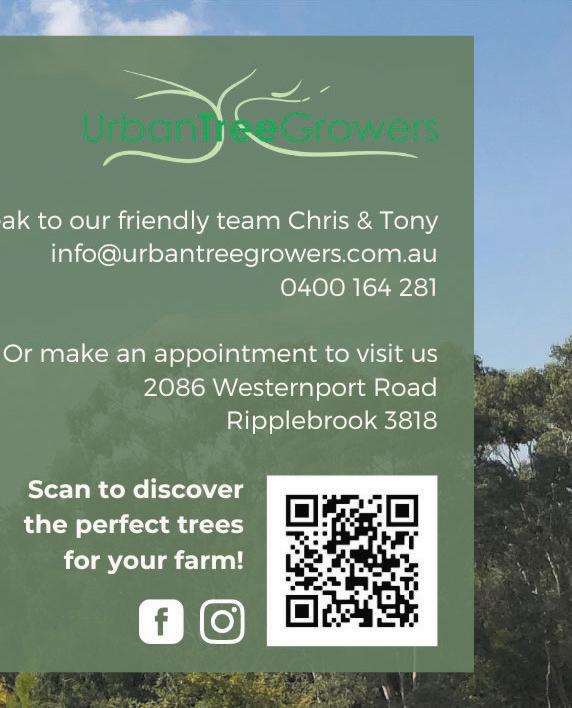
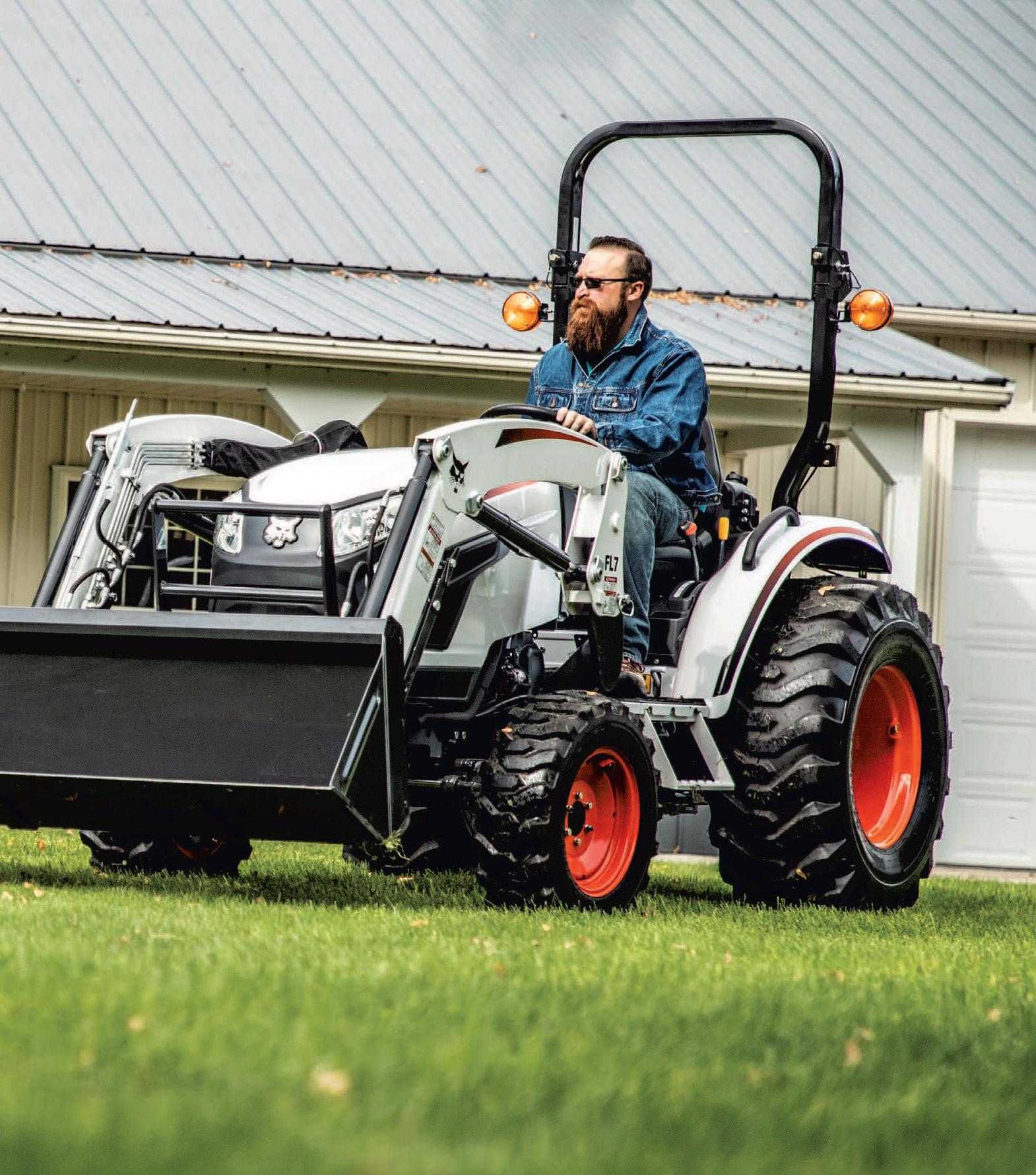
















Since opening the doors to the office in Rosedale over 2years ago, Colleen Bye and CB Livestock &Property have continued to grow
As an independent livestock and property business, Colleen does not need to seek approval from “Head Office” beforemaking decisions.
This enables Colleen and her clients to have open conversations regarding competitive pricing and finance options.
With the fluctuating prices of cattle, Colleen and the team arealways looking for better options for their clients.
“WehaveweeklyCull orders with cattle drafted and sent to various abattoirs in order to capture the best price per kilogram.” Colleen said.
CB Livestock &Property have contracts with several exportcompanies whichprovides another option for excess heifers.
Contact Colleenfor detailsregarding the next


dairyorbeefshipment.
Ordersfillfastasthe priceisalways competitive.
“Wehaveseen an increase in the number of Hobby Farmers in recent years.
We have Agents and resourcesthatcan assist with drafting, vaccinating/drenching, scanning and weighing.
Our Agents can offer advice on timelines for buyingand sellingtomeet our clients’ needs as well as breed types and stocking rates based on the farmsetup and client knowledge.
We provide supportand assistance to clients throughout the Gippsland region and beyond.” said Colleen.
The site of the officehas high volume exposure to foot traffic and over 15 thousand vehicles now passthrough theroundabout at Rosedale daily
The shop windows offer agreat opportunity to advertise livestock and properties whether

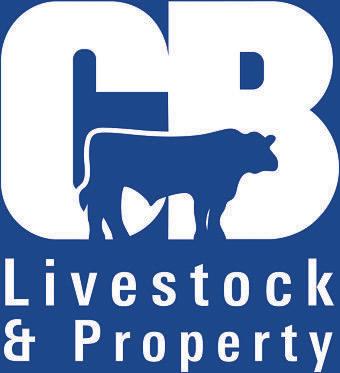
farming, land, commercial or residential for sale, lease or rent
The office is open Monday to Friday,8.30am to 4.30pm. The team arealso happy to assist out of hours by appointment.
Asense of giving back to the community is important to Colleen.
“Weare happy to supportthose who are making adifference in and around Rosedale.
We areamember of the local Chamber of Commerce and arealways looking for new events and organisations to sponsor and get involved in.” explained Colleen.
Drop in for acoffee or achat.
Colleen can assist with property and livestock appraisals.
“Wehave clients currentlylooking for farmland to purchase or lease as well as private cattle sales.”
Address: 1Prince Street, Rosedale VIC 3847
Email: office@cblivestock.com.au
Website: www.cblivestock.com.au
Contacts:
Colleen Bye –Owner 0467 533 003
Kellie Heyne - Agents Representative 0428 120 686
Anne Davis - Finance &Business 0486 022 883
Wayne McKay - Commission Agent 0419 486 282
Steve Fallon -Commission Agent 0427 352 231
Corey Welch -Commission Agent 0499 291 158




















It has long been recognised that plants and soil need morethan NPK to produce.
SustainableAgricultural Solutions saw aneed to come up withproducts that were notonly beneficial to plants and soils but wereverycost effective.
The Bio-Boost rangeoffertiliserssupply everyelement that agrowingcropneeds while also building up soilreserves for futurecrop requirements.
Bio-Boost Cal/Mag 5:1 is amulti-purpose supplement specially formulated for low calcium/ Magnesium soils.
It is auniqueblendofCa/Mg, Nand trace elements that provides unique benefits that many other fertilizers cannot offer
Due to the presence of calcium in the Cal/Mag 5:1 composition, the usual loss of nitrogen that takes placedue to ammoniavolatilisation when urea is applied is minimised.
This is important in sandysoil because Nitrate nitrogen leaches from the soil veryquickly whereas the ammonia formofnitrogen in this product is much morestable.
Calcium has long been recognised as an important soil amendment.
By using ahighly soluble source of calcium like Cal/Mag 5:1 liquid calcium, the grower is able to quickly remove harmfulsodium salts from the root zone,leaving behind valuable


calcium, magnesium and nitrogen nutrients to provide proper nutrition for rapid recovery and vegetative regrowth.
Magnesium is the element that is absolutely essential for the formationofchlorophyll and all chemical processes in leaves.
Without chlorophyll, plants areunableto convertsunlightand carbon dioxide.
Thereisnolife without magnesium. Lowmagnesium soils produce weak plants with small leaves, often the leaf margin is withered or burnt to concentrate the magnesium into the centreofthe leaf soitcan photosynthesise moreefficiently
By applying Cal/Mag 5:1 into soil and also foliar spraying the leaf size will increase. This will increase productivity
For instance, doubling the width of pasture leaves willdoublethe volume without increasing height.
Suitable for soil and foliage application.
Ratio 5:1 is the efficient ratio for calcium and magnesium whereboth of these vitally essential elements work in harmony
Cal/Mag 5:1 +N
Liquid Advantages:
Easy to freight, storeand applywith indefinite shelf life.
Calcium and Magnesium areconcentrated sea minerals
Highly concentrated apply from only 5 litres per Ha
Bio-Boost NPK Foliage Spray is high energy for crops/pasturewith premium levels of Phosphorous, Nitrogen, Potassium and trace elementsthatare essential for goodpasture/ crop energy and nutrition.
Within seconds of application Bio-Boost NPK FoliageSpraystarts to worksystemically helping to correct deficiencies and improving pasture health.
It reduces the need for supplements and helps with weight gain and productivity
Because it travels systemically down into the roots it compensates soil ‘lockup’ and deficiencies in crops and also helps with faster pasture recovery.
Application: Applyanytime to agrowing plant 5ltrsoffertiliser to 100ltrs of water
Spray for maximumfoliage surface coverage. Works best in conjunction with Bio-Boost Cal/ Mag.
For moreinformation visit www.sustainableagriculturalsolutions.com.au

$28







Finding anon-antibiotic calf supplement that worked when the stakes were high was achallengeNita McRae conquered with SuperCalf.
Nita –who is driven by detail and her commitment to rearing morethan1200 calves withnegligible losses in East Gippsland– has to handle morepotentialsnags than most operations.
Nita and husband Stewartrun three dairies at Denison, milking atotal of 1500 cows across three farms within an 18km radius.
The anchor at the calf sheds on the home farmiswithout question: Nita.
She is there everyday from Julythrough to Christmas –unless thereisafamilyemergency –rearing around 950 calves through the spring alone.
She not only rears the heifer replacements for their registered Gallrae Holstein herd, she is also the chosen pilot calf rearer for Elite DairyBeef(EDB).
Nita’snumbers for EDB include their own Holstein bull calves, along with bull calves from other suppliers.
EDB is an exacting and concentrated contract rearing programmefor 14 weeks (six weeks on milk), which ultimately finishes Holstein steersatupto550kg liveweight aged 12 months, with ameat quality rivalling Wagyu.
An example of its “exacting” natureis being deemed“never-ever”, whichmeans no antibiotics,ionophores or hormonesfor the animal’slifetime.
Thosecalves leave the McRaes’farm two weeks after weaning, giving them time to adjustpost-weaningbeforemovingtoa grower’sproperty
The programme was developed by Spanish company INZAR and has been running for decades in the UK and Europe, achieving premiums for dairysteers.
If they do need to be treated duringrearing, they drop to another tier of the programme, and the farmer is still paid the same.
Nita has navigated the increasing numbers with her protocols, shed design and some effective, natural products she sources from Daviesway DASCO.
Twoofher key natural supplementsinclude SuperCalf and BioBoost.
SuperCalfisanadvanced powdered additive for whole milk and/or calf milk replacer whichcombines industry-leadinglevelsof micro-encapsulated probiotics [11.6 billion colony forming units per dose], with essential vitamins and minerals, Actigen®, and Yucca extract. It gives apowerful daily dose of effective probiotics which supportthe calves throughout rearing.
BioBoost is amicro-encapsulated, multi-strain probiotic treatment paste with vitamin Einaneasy-toadminister tube.
It is anatural support forimmune function –boasting billions of colony forming units.
It’sideal if calves arestressed, on the cusp of becoming unwell, or if they arerecovering.
“The proof is in the pudding: they worked,” Nita says.
“When you’rea farmer,everything has to be easy and practical, or it doesn’t happen when you’reinthe thick of things.”
Her calf rearing facility includes two customdesigned, 80m, north-east facing sheds.
Each has 20 pens (4m wide by 9m deep).
Theyare coveredbya12m roofline (4m high at the front and 3m high at the back).
A1mventilation gap at theroofline combined with a300cm gapatthe top of the back concrete wall allow the shed to offer exceptional ventilation; the constantairflow movesover the calves without being directly on them.
Pine mulch is their chosen bedding.


Because she was already heavily invested in the rest of Daviesway DASCO’scalfrearingrange, she was introduced to Daviesway DASCO’s Brendan Johnson by James Mastwyk, who works in the DW RuralWarragul store.
“I buy alot of products for the calves from James,and I’malways looking for ways to improve,” Nita says.
“SuperCalf and BioBoost did everything they said they would do.
“It means that even though it has been physically tough rearing morecalves, it is no longer mentally tough, and that is the difference.”







Australia’sleading high pressurewater blaster manufacturer,Australian Pump Industries has increased production of its range of cold and hot water pressurecleaners, ideal for keeping farm equipment clean.
Conceived, designed, and built in Australia, the machines offer features that aresignificantly upgraded from imports from Europe or thirdworld countries.
The range, starting with the 3,000 psi Aussie AB30 “Pocket Rocket” offer models that go all the way to 7,000psi (500 bar).
Available in both Honda petrol and Yanmar diesel drive engine options, the machines arerobust, mobile, and easy to use.
The heavy duty range of gearbox drive pressurecleaners aredesigned for continuous use.
Called the Aussie Scud, the machines areabreakthrough in design.
Testimonials from our current users say, “Works well and is used everyday for weeks at atime!”

















They offer aunique ergonomic, stainless steel frame with four 13” steel wheels and big flat free tyres.
This means the machines areeasy to move around and, with aperformance range between 3,000 psi and 5,000 psi, thereare models available to virtually suit everyapplication.
The heartofthe system is a“Big Berty” Bertolini pump, gearbox drive running at slow speed (1450 rpm).
They aredesigned for along and trouble-free life.
Awide range of attachments make clean up faster and moreefficient.
Extension wands for hardtoreach areas and even turbo lances all help to cut cleaning times.
The latest introduction of the Scud is a high flow version suitable for machinery washdown or even moving livestock effluent from dairies, piggeries, or similar applications.
The best news is that Aussie Pumps have increased production volume and moved into alarger facility
But this has not deterred Aussie Pumps, they have always been able to keep prices at highly competitive levels.
Cleaning with hot water and steam has several advantages.
It’smoreefficient, cutting cleaning times by up to 75 percent, using less water and less chemicals.
It’salso morehygienic, reducing
bacteria.
Aussie’sSizzler hot wash delivers 1800 psi pressurewith aflow of 10 lpm.
With amaximum temperatureof80 degrees C, the machine has proven popular for cleaning farmequipment and dairywashdown.
Using hot water to clean away oil and grease from machineryisnot only faster, but it also helps to identify hydraulic leaks prior to service, facilitating less equipment down time.
The Sizzler comes in astainless steel cover over afour wheel trolley
The secret of the machine’ssuccess is what is under the cover
It comes with atop quality slow speed First World heavy duty Triplex pump with solid ceramic pistons.
It is driven by afour pole 1450 rpm electric motor and equipped with loads of safety protection gadgets.
Bigger steam cleaners with temperatures up to 130 degrees Celsius capability arealso available.
Because Aussie Pumps is asmall Australian company with only 50 employees, they don’tcarrythe huge overheads of the big corporations. That independence means that they can pour moremoney into product development.
Their inspiration is feedback from awide range of customers who use the products that they make.
Their preoccupation is self-priming centrifugal pumps and high pressure water blasters.
That may sound simple but the range they have developed over the last 30 years is the most complete and versatile in the industry!
“When doing our design work, we always talk to users to get feedback for what they think the product should be like” said Aussie Pump’sChief Engineer, John Hales.
“The engineering and design team always want to know what the user thinks because after all, they have more experience on the job than we ever will.”
The result is products that represent real advantages over both local and imported competitors that aresafer and moreeconomical to use and, represent significantly better value for money
Aussie Pumps realised that having agreat product line means having distributors who carrythe stock, know the product and understand how to apply it.
Victoria is blessed with several professional ‘Aussie Gold Distributors’ throughout the region.
“Our dealers have confidence in our product line because they know our priority is to deliver top outcomes to the people who use the equipment”.
For further information contact Australian Pump Industries on 02 8865 3500 or online at aussiepumps.com.au

In the world of dairyproduction, the collaboration betweenBurra Foods and its Milk Supply Partners is about morethanjust transactional dealings.
It representsapartnership foundedon principles of mutual respect.
StewartCarson,CEO of BurraFoods, explained that the partnerships with Milk Supply Partners arealso about shared values.
At Burra,we understand that our success as acompanyis intrinsically linkedtothe wellbeing and prosperity of our dairyfarmersStewartCarson, CEO of BurraFoods
“At Burra, we understand that our success as acompanyisintrinsically linked to the wellbeing and prosperity of our dairyfarmers,” he said.
Burra connects with local communities and most importantly,works hardtodeliver on its promises.
That’sappreciated by localfarmers like Mark Cecil.
Recentlycelebrating over acenturyoffarming legacy,Markand Jenny Cecilare fourthgenerationcustodians of Silverglen,their family’sdairy farmatPoowong.
In 1924 Mark’sgreat-grandparents, Harry and May Hewson, bought 140 acres of land and established their dairyfarm.
The couple’sresilience was soon tested when aharsh droughtset in almost immediately, leaving them reliant on rabbits and onions for sustenanceuntil things picked up and the cows wereproducing again.
Over theyearsHarryand Mayhad five
children, one of whom was Jean.
In ahappy coincidence, Jean tied the knot with next-door neighbour Jack Cecil.
They went on to have six children and eventually take over the home farm.
Son Ken and his wife Wendy and their three children were next-generation owners, and today their son Mark is the one who runs the show
Each generation added to the land holdings along the way
Jack had access to land through the Soldier Settlement Scheme.
Kenand Wendy boughtanout block three kilometres away,and Mark and Jenny bought their neighbours out afew years ago.
Today,the property stands at 510 acres.
Theycurrentlymilkaround240 cattleand have 80 young stock.
Markand hisfamily arehappy thatthey’ve chosen to work with Burra, and don’tplan to change.
“Burra is veryeasy to deal with.
We haven’thad asingle issue and that makes our lives easier,” he explained.
“Also, Burra Foods is alocal company that does alot to supportour community.Inthese changing times, that’smoreimportant than ever
So Iwant to supportthem.”
Stewartagain reinforced the partnership aspect of Burra’sbusiness success.
“Werecognisethe hard work anddedication that goes into dairyfarming,and we valuethe contribution our partners make to ourbusiness,” he noted.
“Whether it’sproviding fair pricing for their milk or providing opportunities for subsidised study tours, we strive to be areliable and supportive ally to our farmers.”
As partofthe localcommunity,Burra Foods is committedtomaking ameaningful contribution to the lives of those around the area.
Since itsinception in 2013, the Burra Foundationcontinuestostronglysupport local groups and organisations, providing grants that have apositive impact on the local community




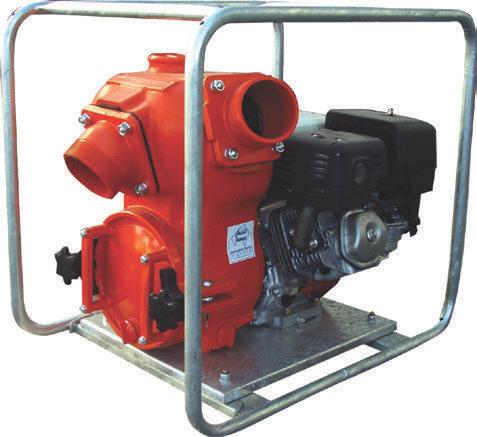
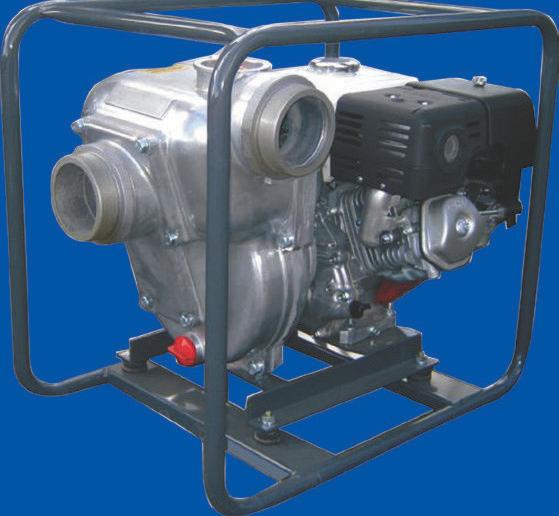
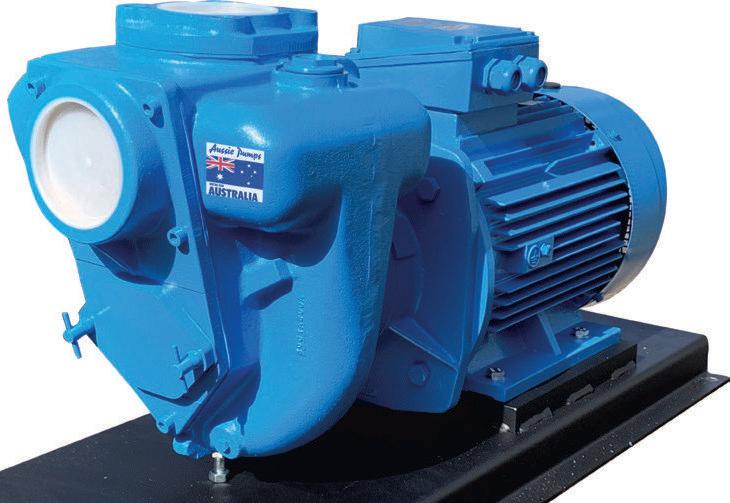
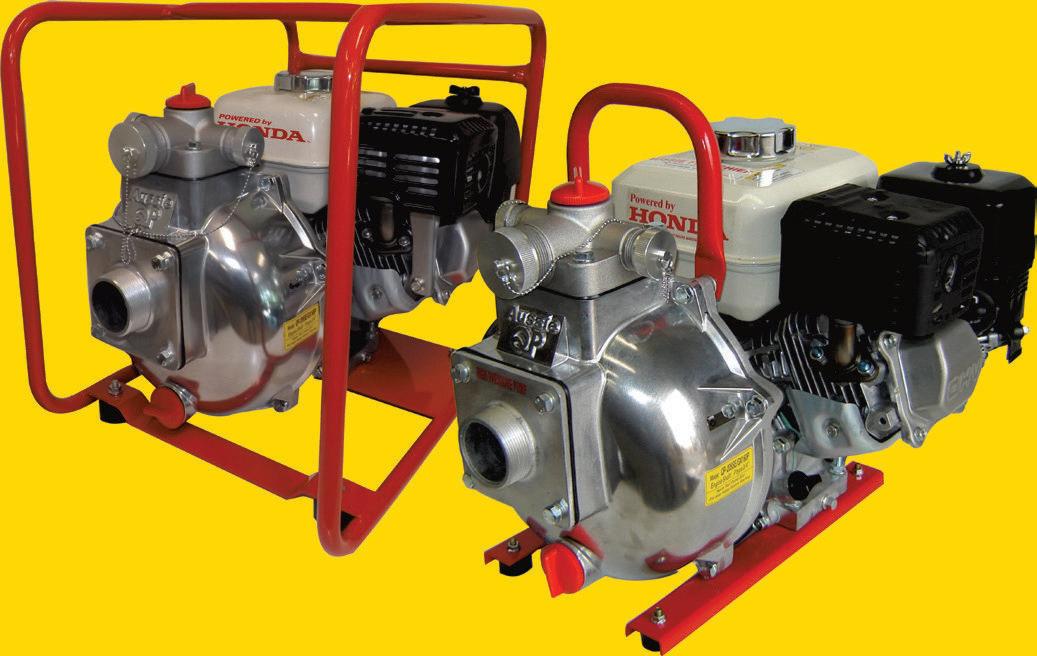





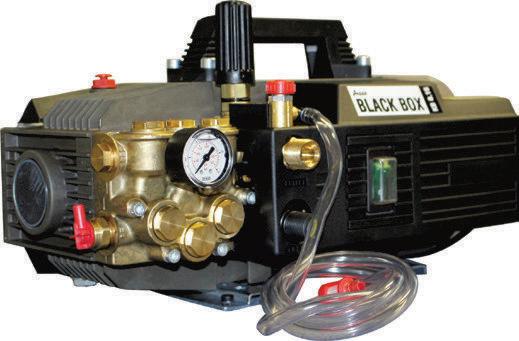





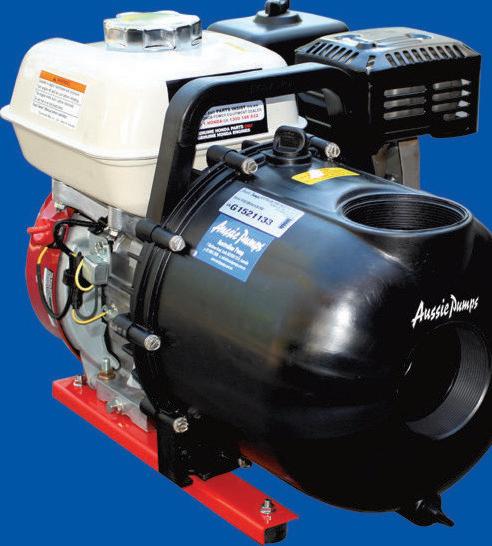


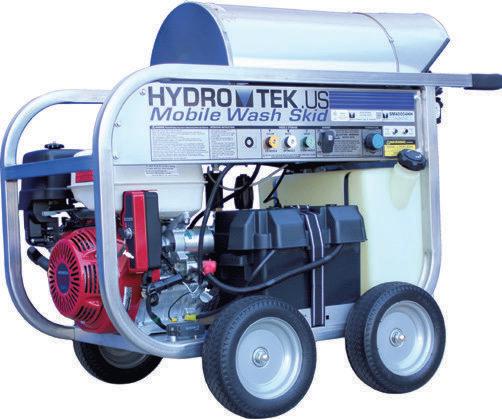
‘LET’S get folky’ was this year’s theme for the Boolarra Folk Festival.
Thefestival’s21stinstalment was held last month (March 1and 2).
Thousands of people came to enjoy the event,whichwas full of food, market stalls, and music.
TheFridaynight eventwas heldatthe Boolarra Memorial Hall, with music from acts such as Steph Fischer-Ivancsyand The Bad Jackets, Strzelecki Stringbusters, PaulBuchman’s Voodoo Preachers and Smokin’ Dog Johnson.
The second day saw people branchout between the market in Railway Park, and watching various musos in action on the stageportion at Centennial Park.There, attendees picnicked and lounged around listening to talented musicians who came from local areas and Melbourne.
For earlyvisitors,peoplegot towander through the market, which opened at 10am, with the pleasureofthe lack of lines, while Invy HornJam, Boolarra Primary School kids and the Steve Schulz Drumming Circle got ready to start their set.
Therewas multiple stalls at the market, including plants,tattoos, food, soaps, candles, metal ornaments, readings, bags and cigar box-electric guitars.
For those who had missed the earlier sessions or wanted to play, therewas busking sessions available within the market, which



sparked lots of interest and the ringing of Bella Ciao played by the Invy HornJam rang throughout the market.
Parking was packed. Some people parked between the trees and the streets, while othersventureddowntothe Boolarra RecreationReserve,where peoplecould wait or be taken to the event via the Mirboo North shuttle bus service.
Camping down for the day, most people stayed at the festival stage, enjoying the musicians and, later on, dancing with the bands. There wasa lot of excitement throughout the day,spreading through the crowds.
DuringToddCookand the Rufous Whistlers' set, they shared exciting news that they had anew single to share.
“Wewereworking on it on Tuesday (February 27), andweren’tquite sure if we weregoingtofinish it beforethe festival,”
Todd said.
“I’m glad we could finishitand share it with the crowdtoday.It’s such agreat turnout!”
The free festival broughtyoung and old together,muchtothe delightofattendees.
“It’s agreat festival,and the organisers have done agreat job,” festival goer Rosaline La Viesaid.
“It’s very laid back and wonderful. It is amazingtothink thatitisinits 21st year.”
Towards the end of the festival,the market packed up so everyone could enjoy



Beforethe event,
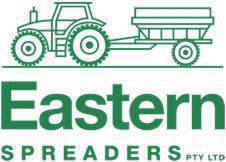



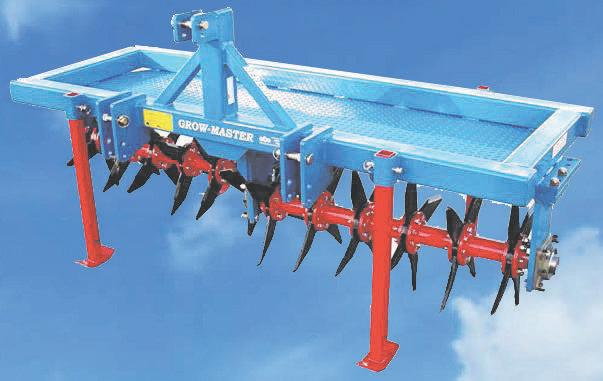






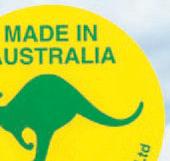

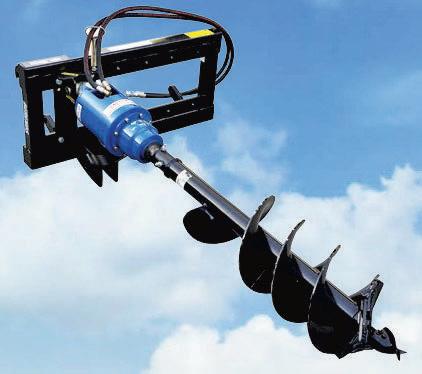






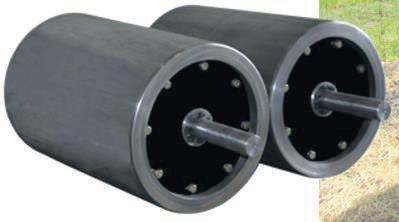

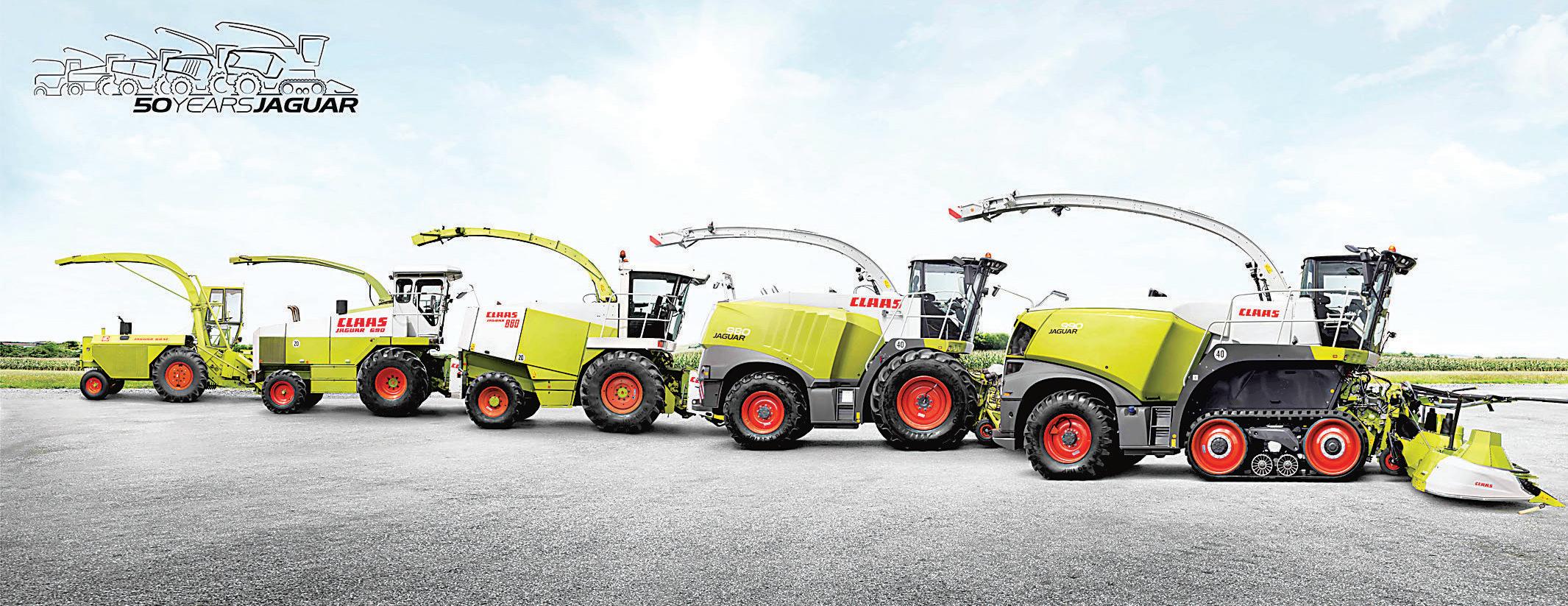









CLAAS is celebrating the 50th anniversary of its leadership in the self-propelled forage harvester market with the release of a special edition JAGUAR 990 TERRA TRAC model at Agritechnica.
Boasting a24litre, V12 MAN engine that delivers awhopping 925 hp, this harvesting behemoth is capable of processing a staggering 400 tonnes of forage per hour!
Sporting an exclusive anniversarycolour schemeand graphics, the ‘top shelf’model incorporates all of CLAAS’ latest operator assistance systems, including CEMOS AUTO Performance.
With morethan 45,000 units manufactured over the past 50 years, JAGUAR has earned ahard-wonreputationfor productivity, efficiency and reliability.
CLAASrevolutionised forage harvesting in 1973 with the release of theJAGUAR 60 SF,a hybrid of components from the company’s existing trailed drum foragers andcombine harvesters.
Morethan 500ofthe 120hpunits were sold within three years, triggering the start of aseries of ground-breaking innovations that rewrote the benchmarks for productivity and efficiency.
In 1975, CLAASreleased theJAGUAR 80 SF,the world’sfirst four-row forage harvester
Powered by a213 hp V10 diesel engine, the 80 SF introduced adischarge blower automatic steeringand the ability to separate the feeder and chopping cylinder housings for easy maintenance.
The followingyear,itwas joined by the JAGUAR 70 SF,which was capable of supporting athen ground-breaking throughput of 75 tonnes per hour
1983 saw the release of the JAGUAR 600 series, the world’s first six-row maize forage harvester
Powered by 300 hp high-torque, superefficient Mercedes-Benz engines, the series incorporated an all-new processing centre



















that incorporated a multi-knife chopping cylinder,corncracker,cropaccelerator and ametal detector
Adapted from DOMINATOR combine harvesters, the impressive cab was the first to incorporate electronic controls, including amulti-function lever that gave the operator single-handed control of all the machine’s key functions.
The introduction of the 800 series in 1994 cemented CLAAS’ leadership in forage harvesting technology.
The flagship 880 model was the world’s first eight-row harvester
Its 481 hp engine was mounted transversely behind the rear axle, with power transferred to the chopping cylinder via a powerband.
The rear-mounted enginealsoactedas acounterweight tothe much widerand heavier front attachments being used.
Other improvements included the addition of amorepowerful crop accelerator for accurate discharge to trucks and trailers.
In addition, the corncracker could be rolled out of positionquicklyand easily when switching from maize to grass harvesting –orvice versa.
The high visibility, spacious cab was also the first to incorporate an instructor’s seat.
The launch of the JAGUAR 900 series in 2001 pushed power output to anew high of 623 hp.
It boasted a40km/h road speed, anew cab andthe introductionofthe fullyintegratedCEBIS operatingsystemand multi-function control lever
In 2008, CLAAS smashed performance levels even higher with the introduction of the twin-engine JAGUAR 980.
With acombinedmaximum output of 830 hp, the engines werecontrolled by a dynamic engine management system that automatically adjustedpower outputto load whilst reducing fuel consumption by up to 10 percent.
The new-design V-MAX chopping cylinderwithits paddle-typeknives further improved choppingquality, efficiency and maintenance.
The introduction of anew-generation cab and operator assistance systems, such as the AUTO FILL automaticdischarge system, NIR dry mattersensor andvariable tyre pressurecontrol system, provided greater operator comfort and convenience.
In 2015, CLAAS acquired the US-developed SHREDLAGE maize processor,whichintensively processescornkernels and long-chop maize to improve the digestibility of starch










andfibre.
This was followed by thedevelopment of anew generation ofORBIS maize headers with working widths of up to nine metres.
In 2019, CLAAS launchedthe JAGUAR 900 TERRA TRAC with its innovative crawler tracks and the CEMOS AUTO Performance system, which automatically adjustsengine power curves and forwardspeed for optimal productivity and efficiency.
Morerecentimprovements across both the 900 and 800 series include the Actisiler 37 silage additive system, water injection system and the CEMIS 1200 terminal for automated steering and precision farming applications.
About CLAAS Harvest Centre:CLAAS Harvest Centreisone of the largest privately-ownedfarmmachinery distributors in Australasia. It representssome of the world’s leading farmmachinery brands including CLAAS, AMAZONE, JCB (NZ) and Väderstad (AU), via its network of 33 owned and franchised CLAAS Harvest Centres and 22 independent dealershipsthroughout New Zealand and Australia.
Moreinformation: CLAAS Harvest Centre
Product Manager – CLAAS JAGUAR, Luke Wheeler, +64 27 433 0624.





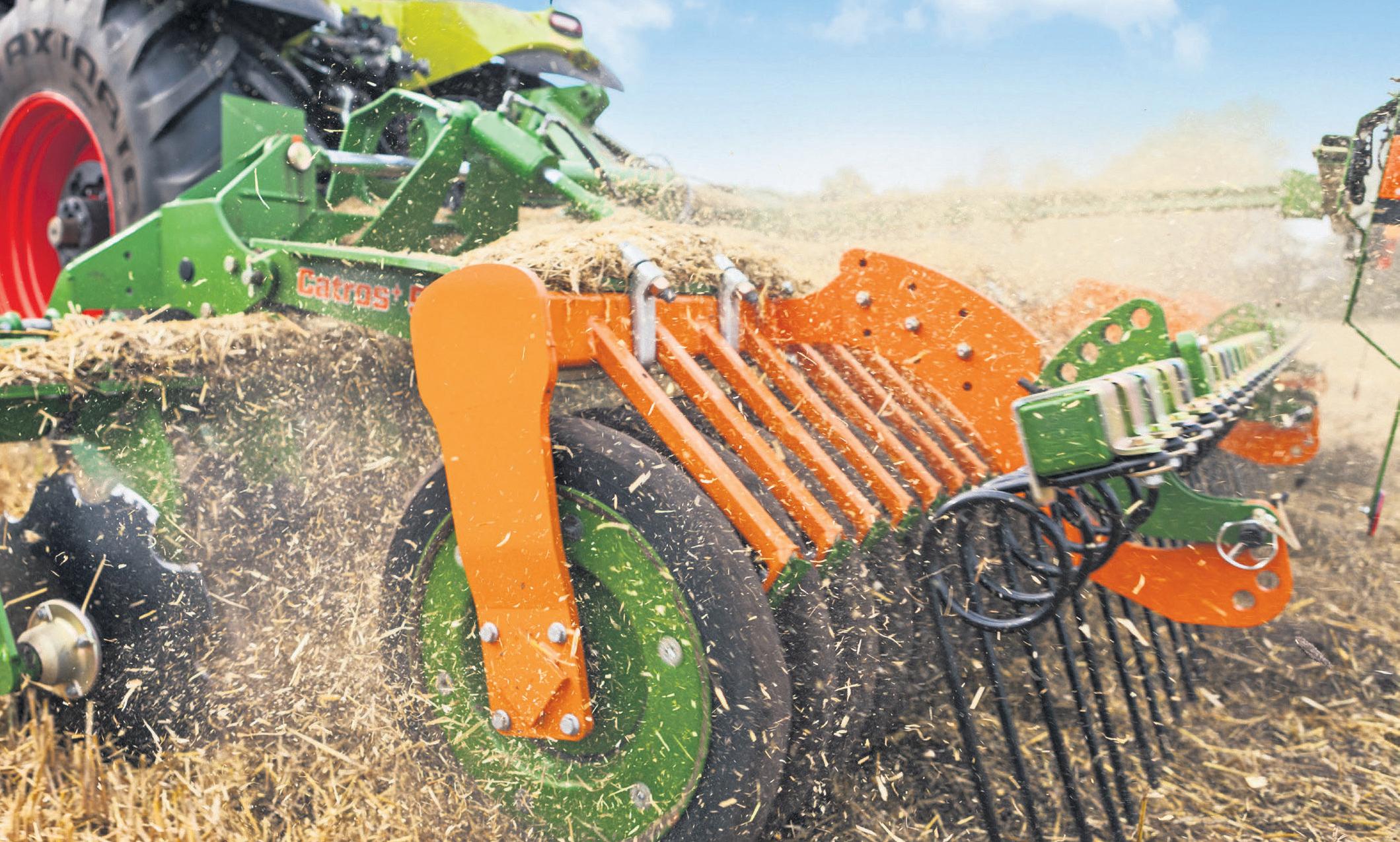



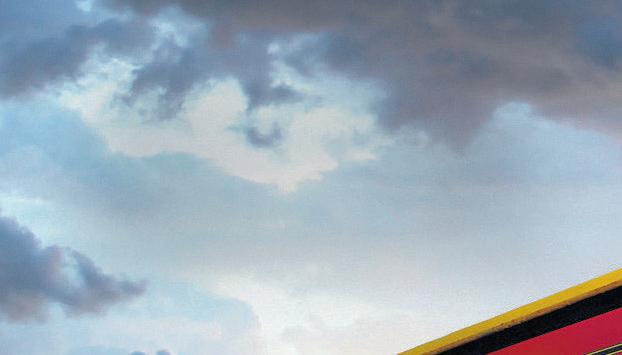
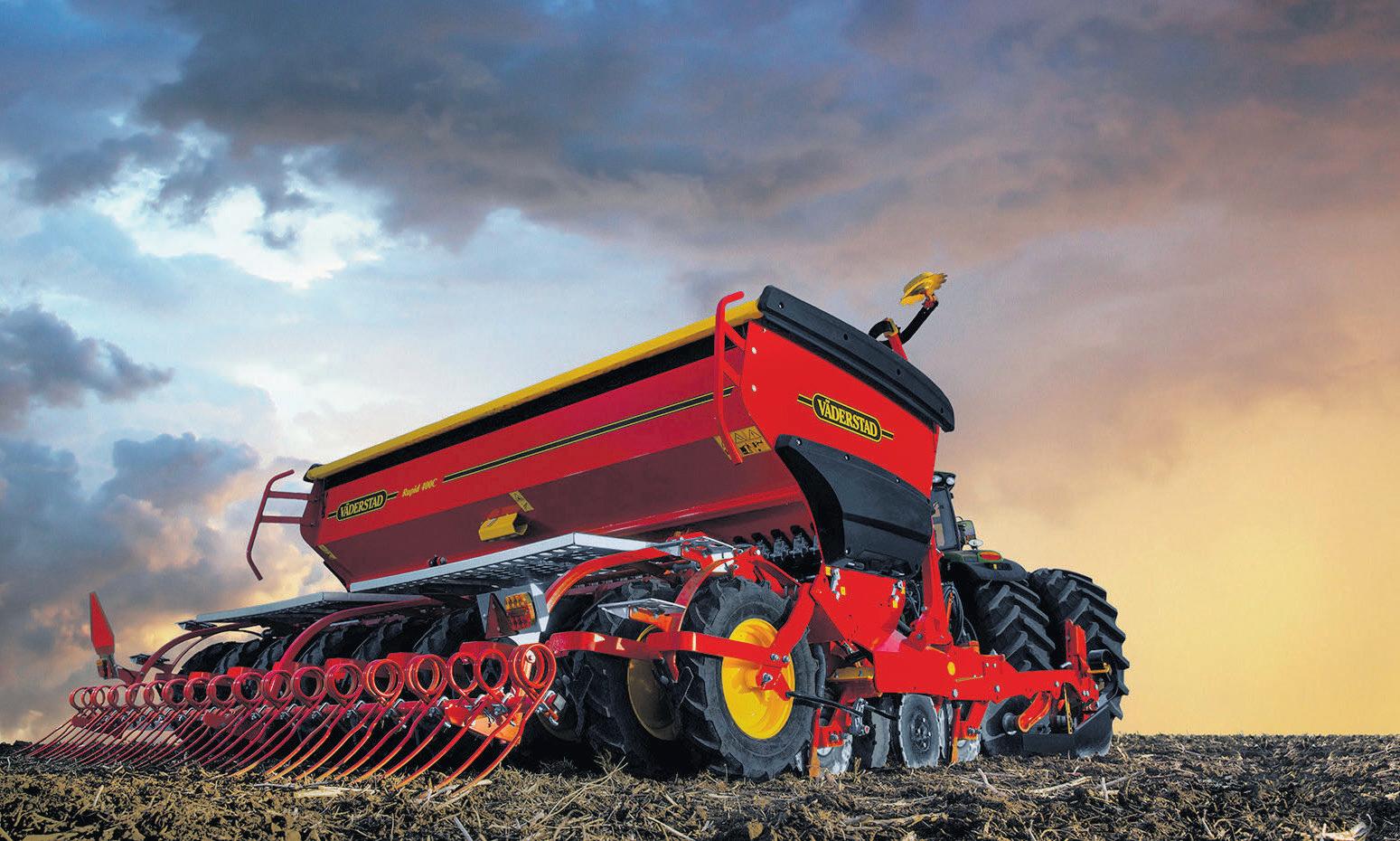
























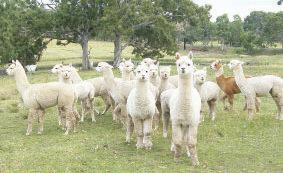

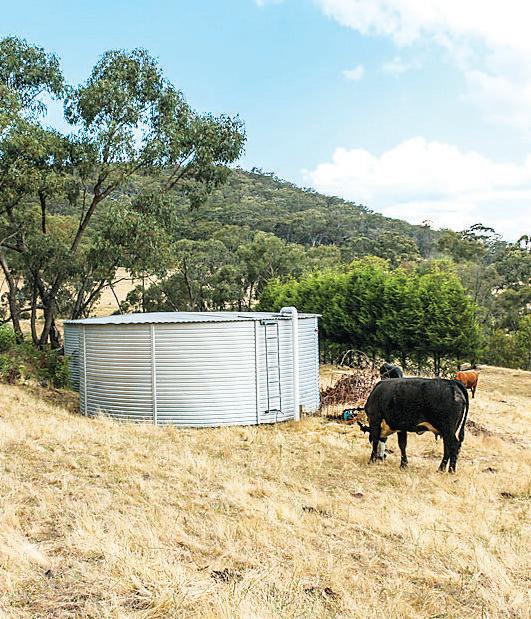
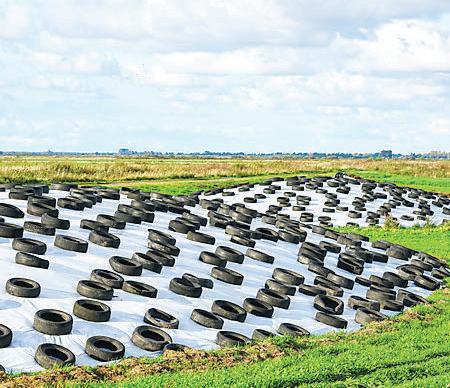

















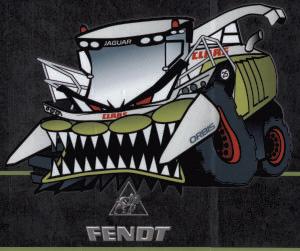
























































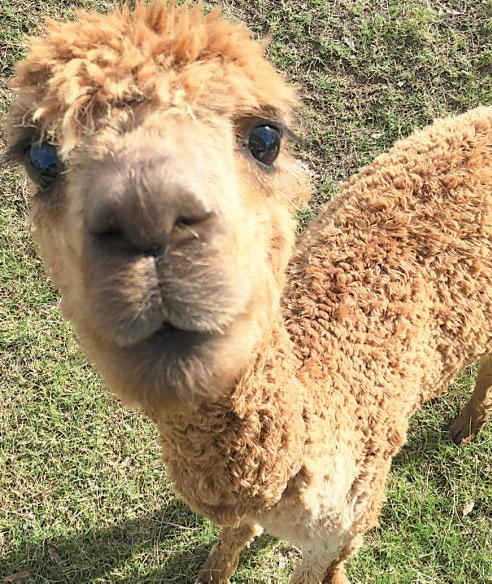













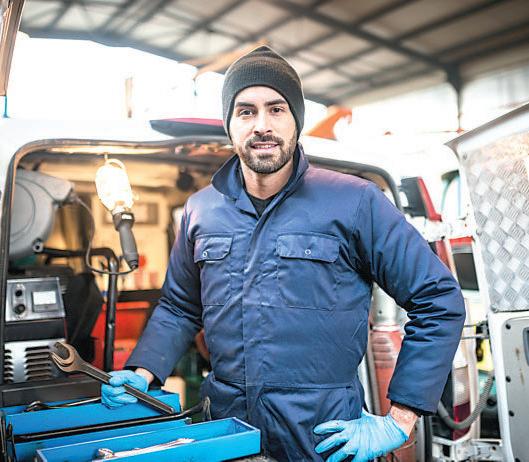




THE LatrobeValley Netball Region was very competitive at the recent Netball Victoria State Titles competition held in Bendigo over the Labour Day long weekend.
Teams from all across Victoria come to compete in the 15 and Under Female, 17 and Under Female and Male, Open Female and Mixed All Abilities competitions.
The Latrobe Valleyteamhas built itself back up and showcased the region’s talent with three femaleteams in the Under15's, Under17'sand Open division.
The Open Team finished the standard draw on top of the ladder,losing only one game.
The Latrobe Valley teamstartedguns blazing beating Glenelg 18-4 in the games two short halves.
Continuing the momentum Latrobe Valley beat the usually strong Elmer,14-10, then Dandenong 16-11, alsobeatingBarwon by four goals, North East by two and Jika by six all on the same day.
Come Sunday, the Latrobe Valley team faced their first loss against TowBays going down 15 goals to 13. Despite the narrow loss, the Latrobe Valleyteam grounded themselvestobeat North Centraland then the second-best team and finalist contenders, Henderson.
With talented andexperienced netballers like Yinnar'sSkye McDonald and Churchill's Rachael Loechelalongside the shooting ferocity ofNilma-Darnum's Hayley Purcell, the Latrobe Valley team really showed the metroclubs some fight.
Depitedominatingthe openfixturefor the tournament, when it came to the first final against Elmer's Open side the Latrobe ValleyWomen couldn'tget the job done, losing 16-11.
It may come as consolation to the team that Elmer went on to win the tournament, beating Henderson in the Grand Final.
Coach Katrina Hutchinson was incredibly happy with theresults, finishing among the top four in the state.
Latrobe Valley'sStateTitles Officer
Tamara Kennedy said she was incredibly proud of the region’s talent.
"It has been abusy and exciting2023-24 StateTitles Campaign. We arejust over halfway into afive-yearplan and arealready exceeding expectations. Our players and coaching staffhave demonstrated that they can match it with some of the best netballers in Victoria," she said.
"Results arealwaysimproving as our players, coaches and administration staff learn more every year.The job won’t be done until we can consistently demonstrate we arearegion to be reckoned with. That means not just winning but making finals and winning over anumber of years."
"Latrobe has always hadtalent and we have alot of raw talent, it’s just amatter of being (able) to harness that talent and give players and coaches an opportunity for consistenthigh quality netball pushing them to their limits.”
The Under 17s, coach Alesha Hallinan, was impressed with her teams strong start, surprising the rest of the competition.

Finishing the fixturethirdon the ladder, the Latrobe Valley young athletes were on fire, winning 12 games and drawing one, out of their 17 matches across three days.
TheUnder 17salmost went through Day 1undefeated.
Startingwith adraw didn't deter the team, going onto win the next five games in arow.
The Under 17s remained fiercely competitive all tournament long, making it to the finals. Unfortunately it was just not meant to be,asthe team went down to Central Highlands 20-12.
Nevertheless, coach Hallinan was proud of her young team, saying she felt each and every player brought their best to the State Titles.
Netball Victoria's EasternRegionManager, Judi Buhagiar,said it was clear that this region can produce the very best of netball.
"Seeing the quality of netball across the weekend mademeextremely proud of our EasternZone which had two regions competing," she said.
"The Gippsland region showed great promise and with Latrobe Valley Region having two of three teamsinfinals, it showed the level of talent not only on the court but offthe court aswellwith the coaching expertisethat was on display and
the work that the State Titles Officers do behind the scenes to get these teams on court."
The Latrobe Valley Under 15s came against some very tough competition. Though they did not make finalsthey showed some very promising signs.
Coach Sammy Watersisconfident the Under 15s will be the futureofthis region's netball.


TomHAYES
APAIR of Lowanna College students have reachednew heights in theirrespective sports, with many thanks to the school’s sports academy.
Year 12 student Ricky Mentha and Year 10 student Cooper Belsham have both taken their games to the next level.
Mentha,afootballer,iscurrentlyin his draftyear and will hope to be picked up at the end of the year
Belsham is abasketballer,who continues to be picked by representative sides, onlygiving himself more exposureinthe basketballing world.
Collectively, the duo has been taught that “taking things easy isn’t the way to always go, but pushing yourself to the next level is”. Belsham has been selected for the state combine, and the state U16s squad, with hopes to play at Nationals towardthe end of the year
He says the sports academy has helped him get to that stage.
“It’s been really good. All of the training and stuffis making me push to my next level,” Belsham said.
With plenty of opportunities,and time, ahead of him, Belshamhopes to continue to get better and gain moreexposure for himself through representative opportunities. Lately, Belshamearnt the opportunity to represent one of two Australian teams in Abu Dhabi for the NBA School Tournament.
“It was an amazing experience playing with all of those people, versing other
countries,” the young athlete said.
Whileaway, Belsham trained and played against other countries from all over the world.
LowannaCollegeSports Academy
Strength and Conditioning Coach, Malcolm Swinley is proud of Belsham, and the steps he has taken so far in his career
“He travels from afair way (Longwarry) to come herewhich is great,” Swinley said.
“I think he’s got great leadershipqualities, he’s always been astrong kid, and when
he first came here, he was alittle bit lost.”
He says thatBelshamhas fit intothe region well and is working on his profile and local identity.
Keep an eye out for stories on this young lad in the future.
Metha is currently in his final year of school and has great potential to be drafted to the AFL at the end of the year
Looking forwardtothe end of the year,he has along path ahead of him, but in 2024 he said, “hopefully Iget drafted to the AFL


…and (finish) Year 12”.
Mentha has spoken to 12 AFL clubs and is also apart of the AFL Academy.
On Grand Final day last year,Mentha steppedfoot on the MCG beforethe big game to play in a big game of his own - the AFL Futures match.
At the time as abottom-ager,hegot to play amongst and against the best bottom-aged players in the country, on the biggest stage of them all while the Grand Final crowd was piling in.
“It was elite, pretty hot though! The game was real fast,” he said.
Head Coach of the Lowanna College Sports Academy, Allan Chandler has nothing but praise for Mentha.
“With Ricky,I’ve beensuper impressed with the growth that he’s had over the year Not just on the footy field, but stuffaway from that,” he said.
Not only has Mentha come out of his shell, after originally comingfromthe Northen Territory, but he has worked on his nutrition which has helped him tenfold.
Thanks to the Lowanna College Sports AcademypartnershipswithNikePTS for example, students like Mentha and Belsham have equipment supplied through the college, as they sponsor them on their journeys from the beginning.
“The biggest one for us is giving them the opportunities and to get them to wherethey wanna go,” Chandler said.
“It’s very harddown here(Gippsland) compared to Melbourne.”
